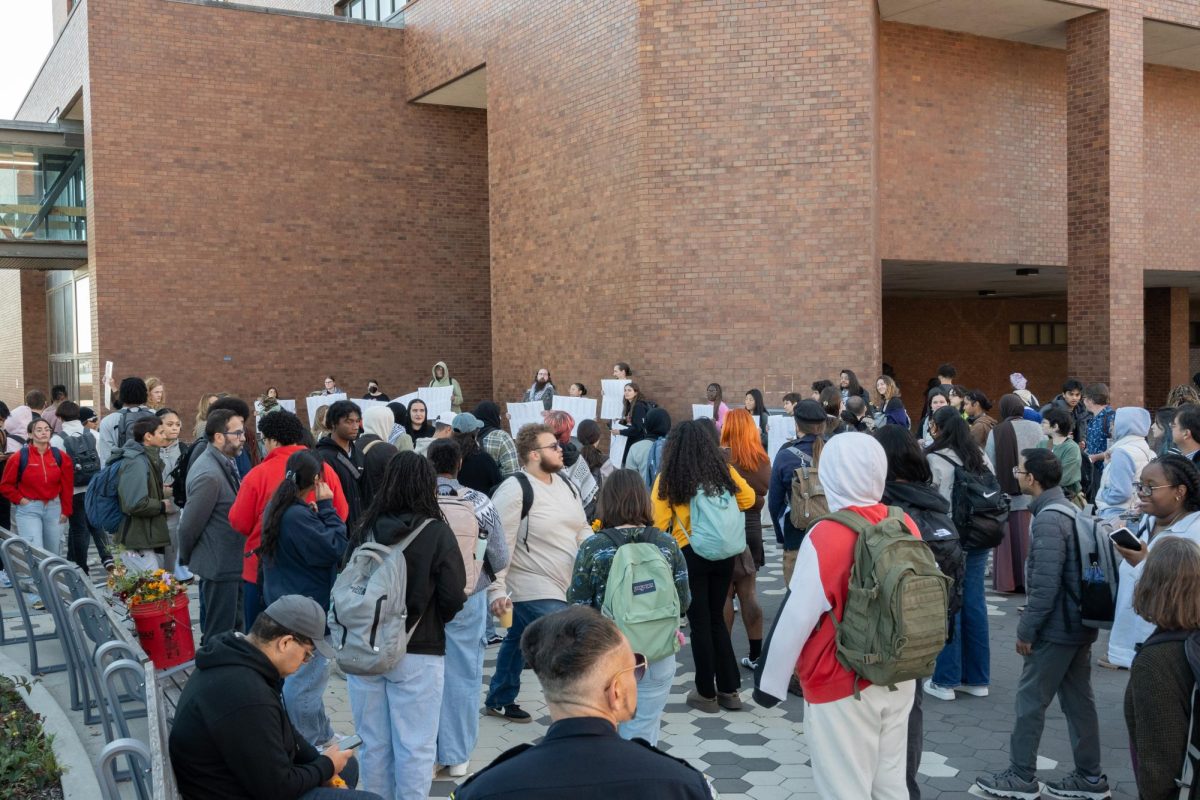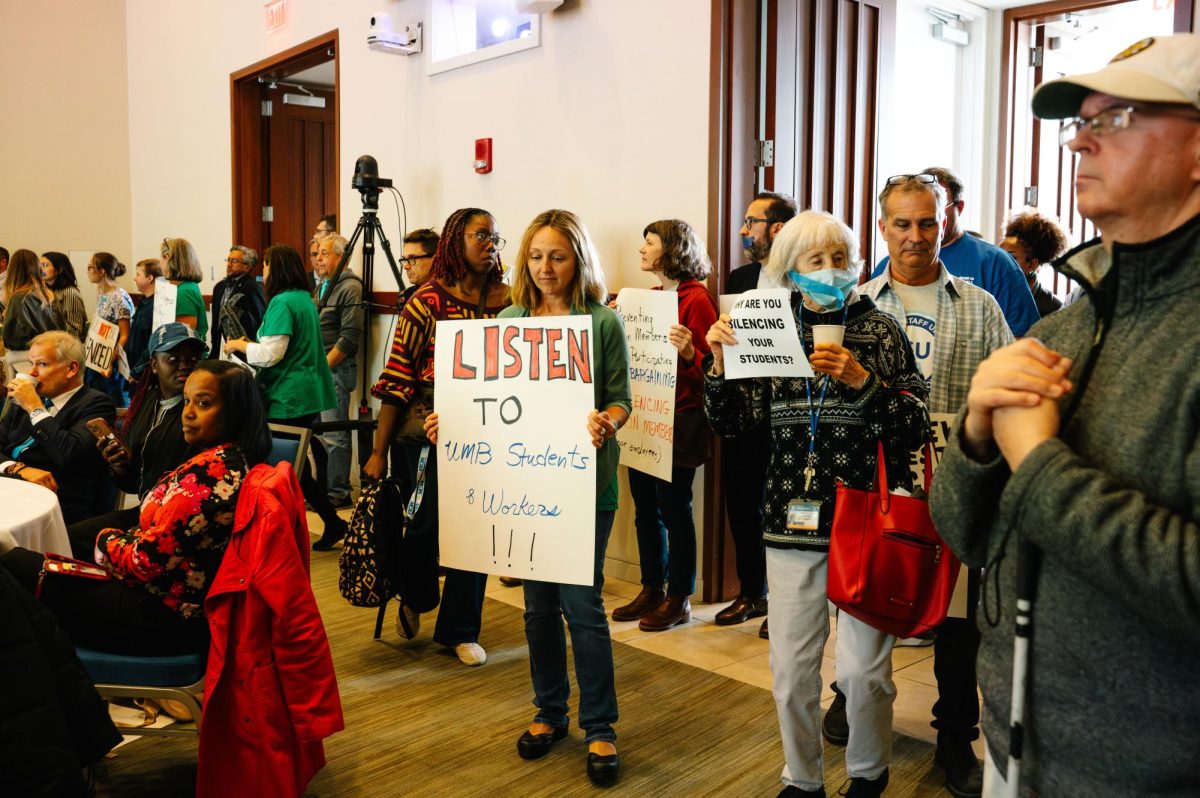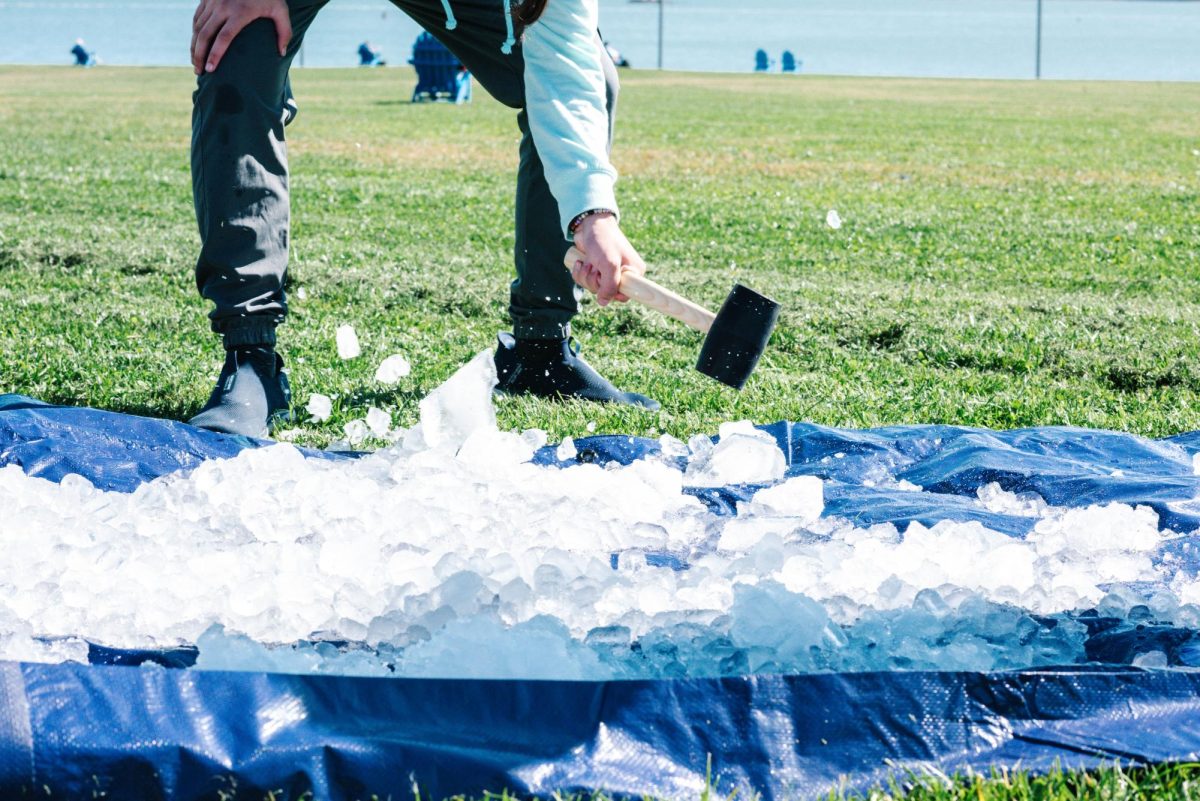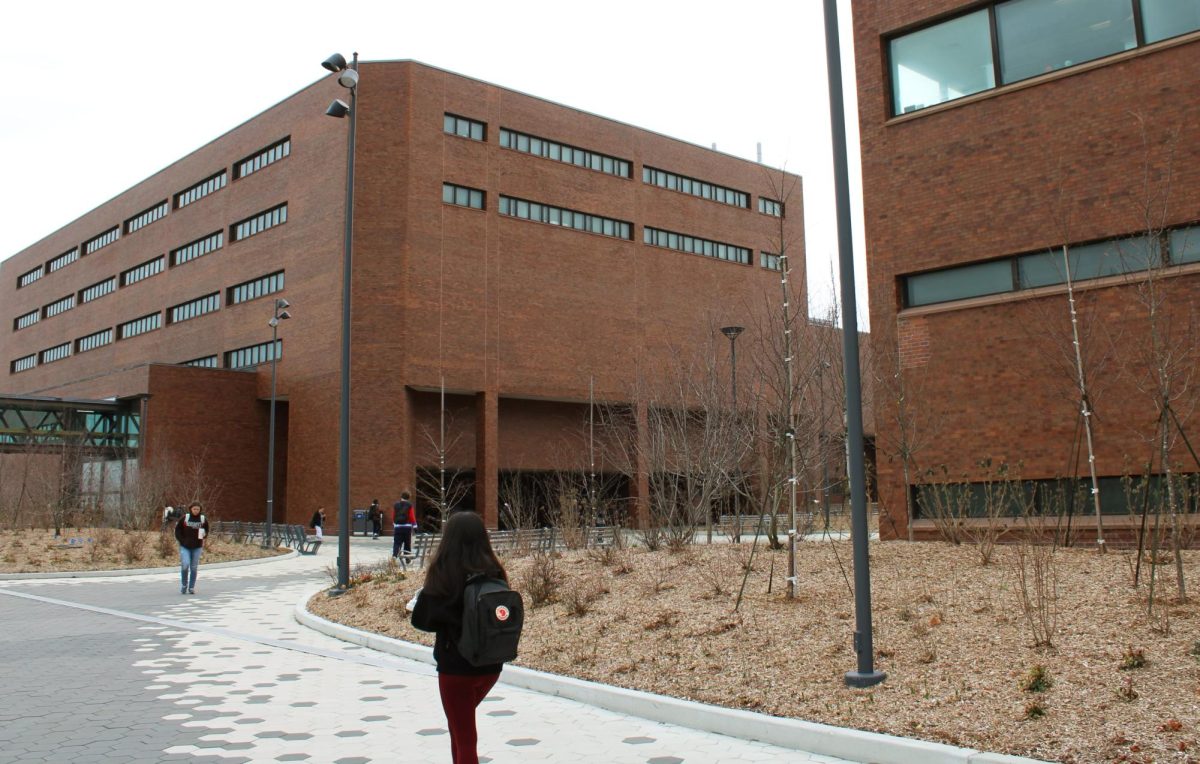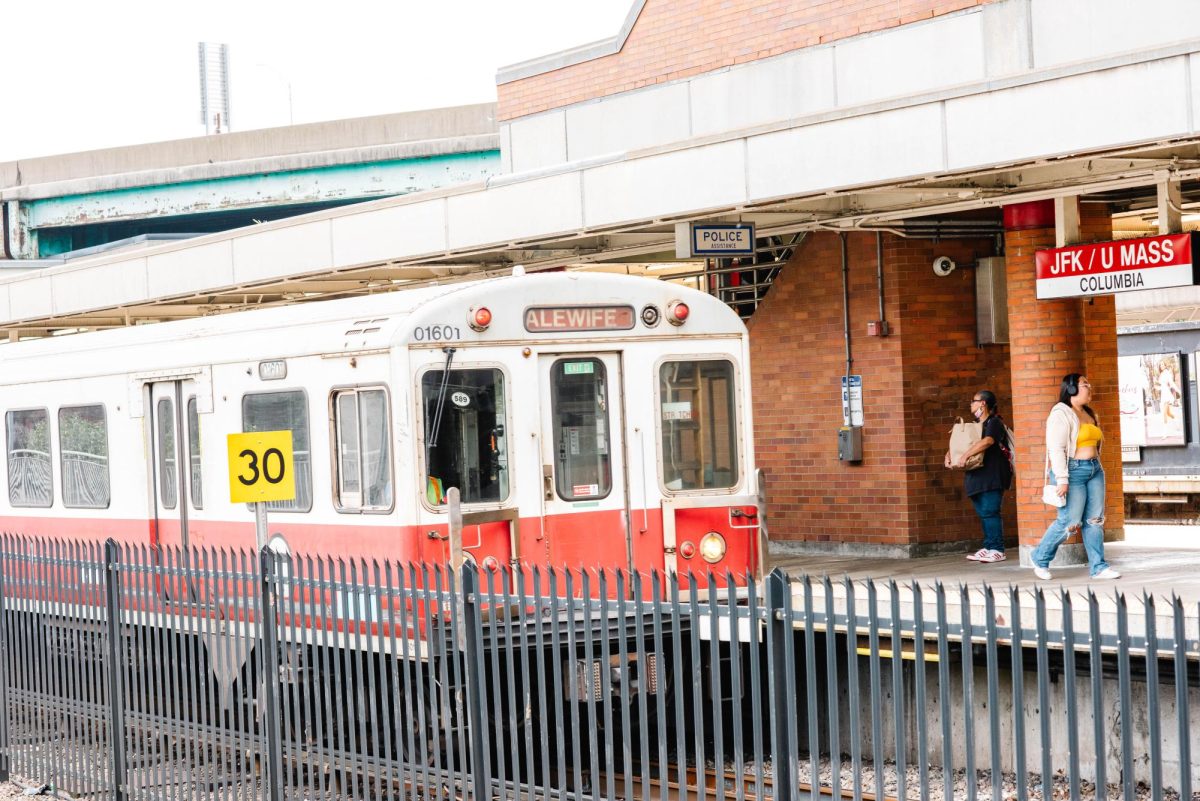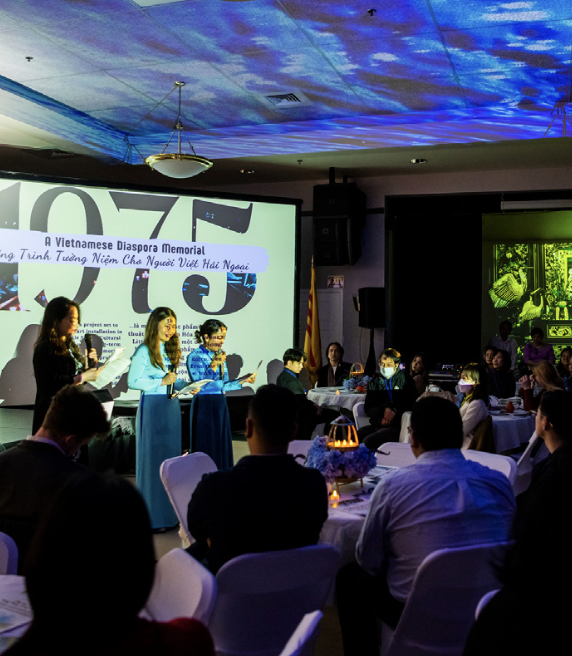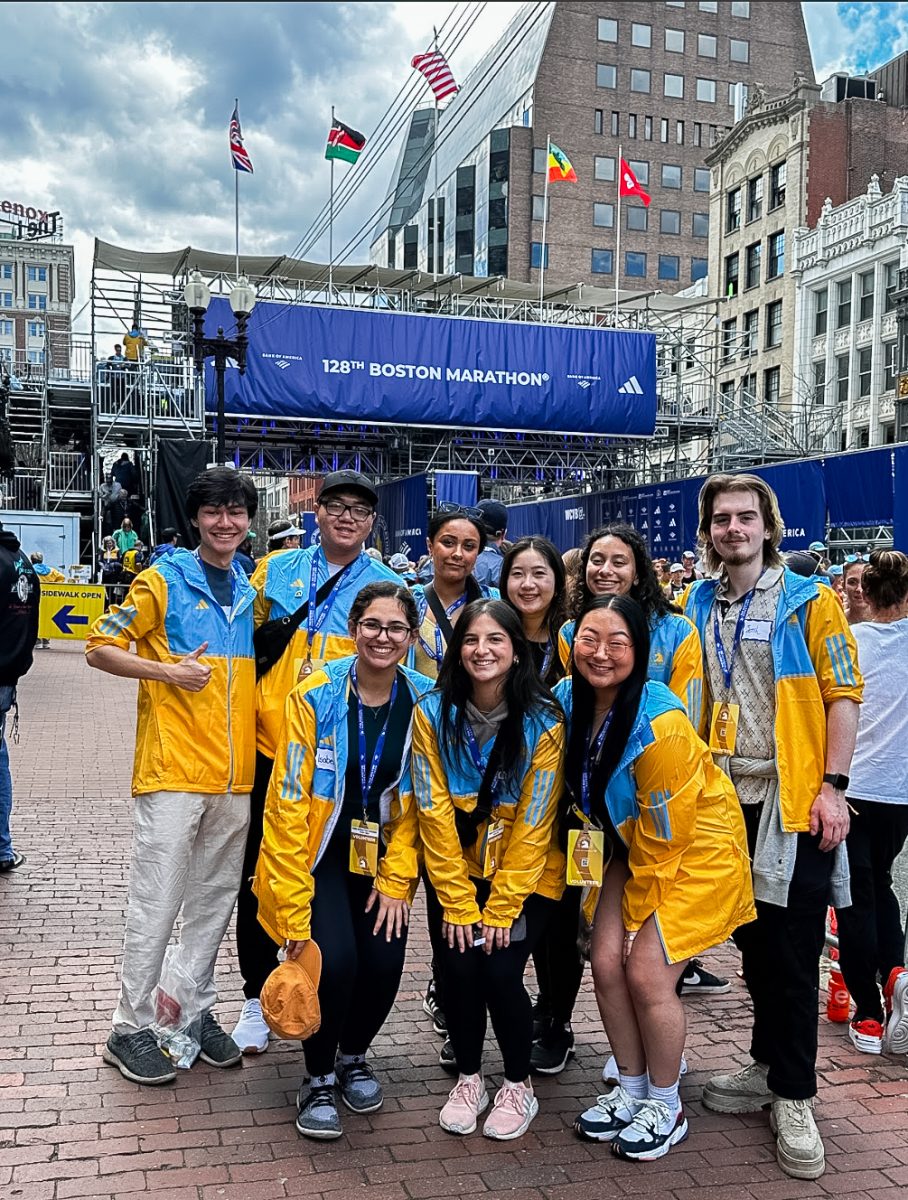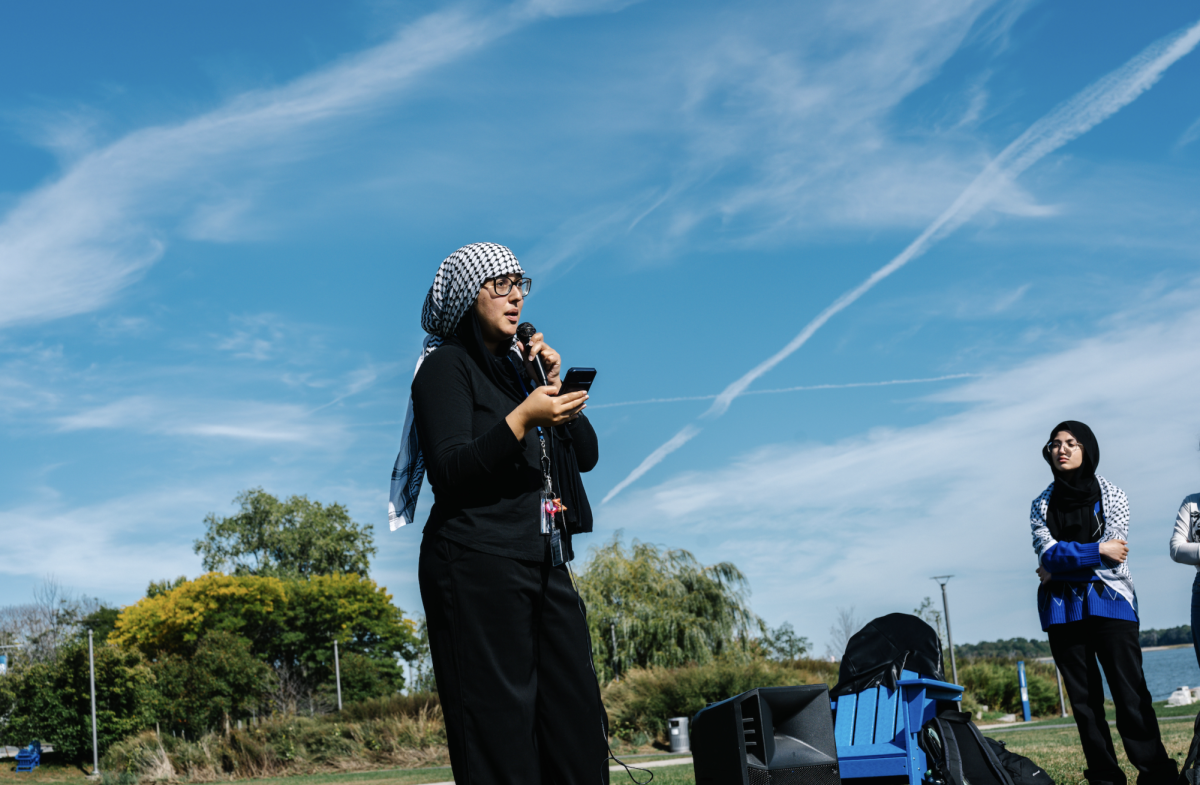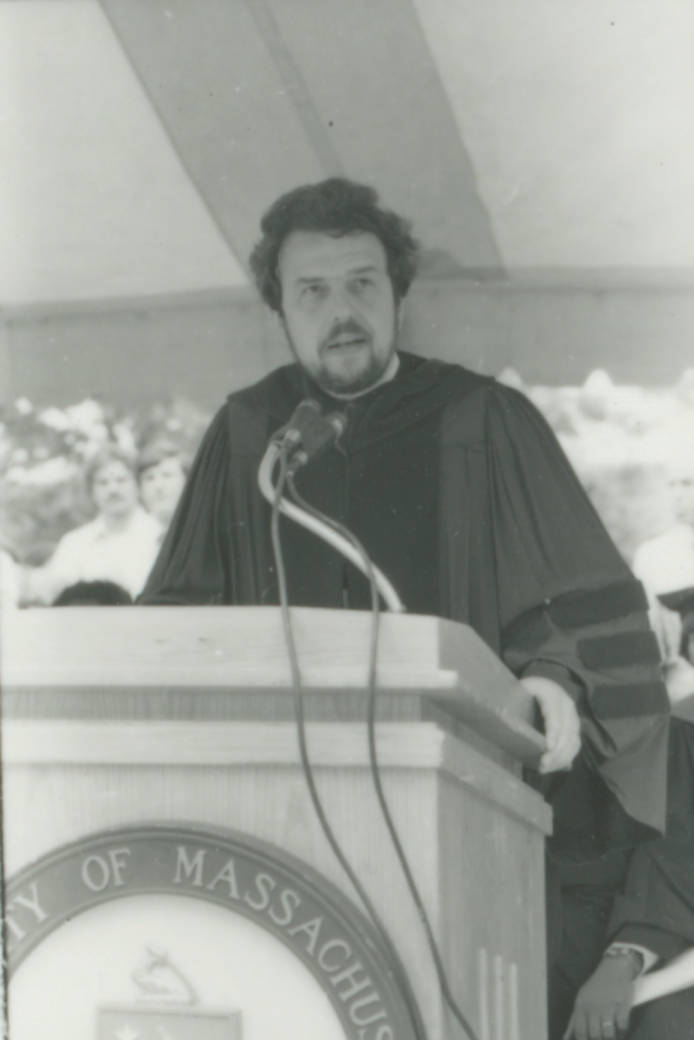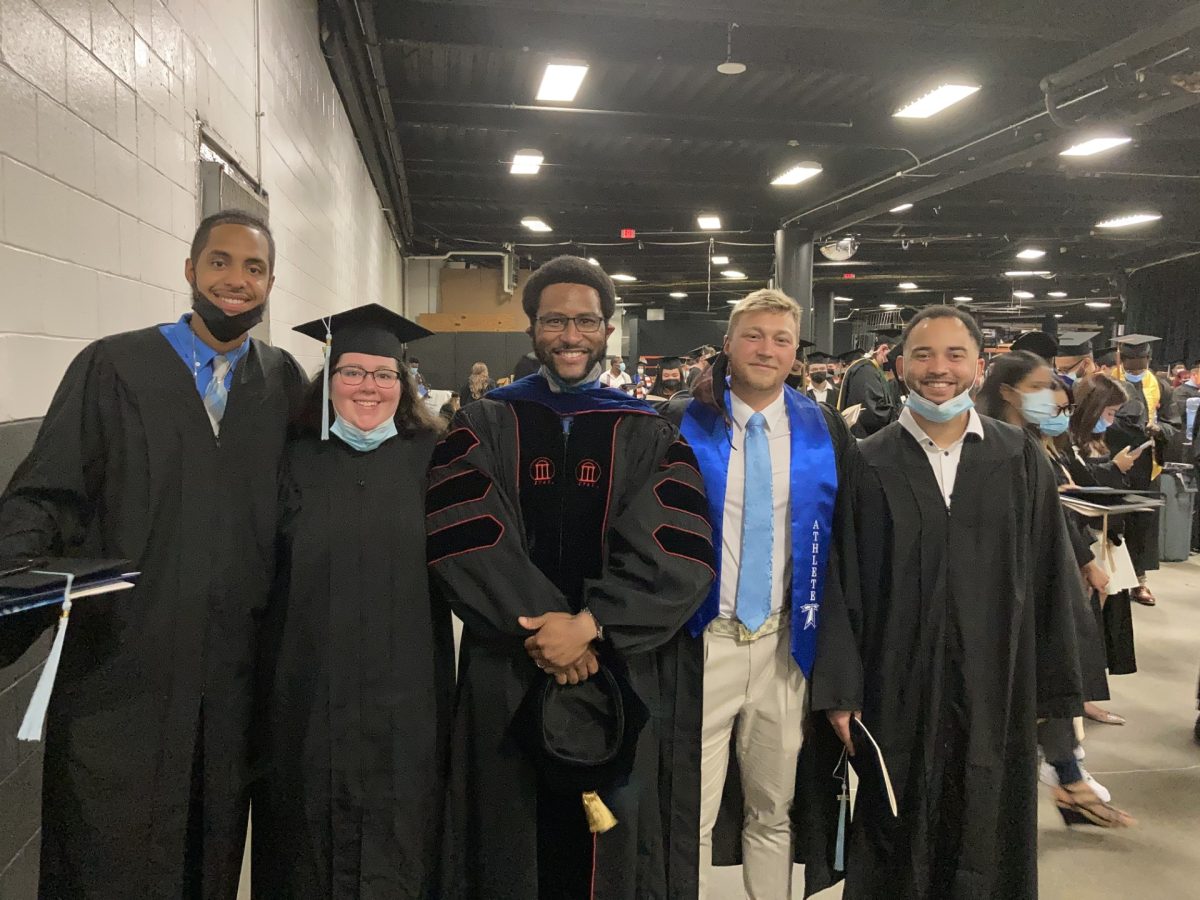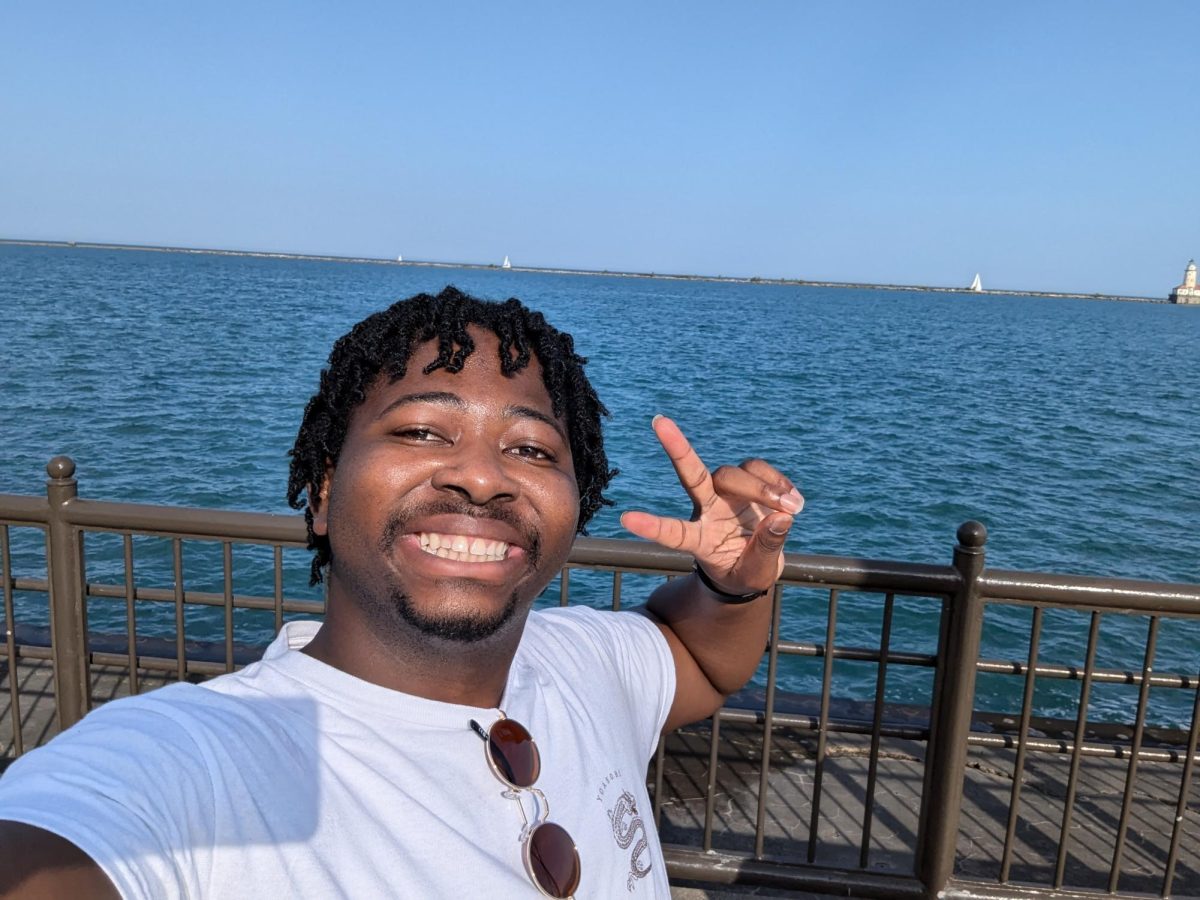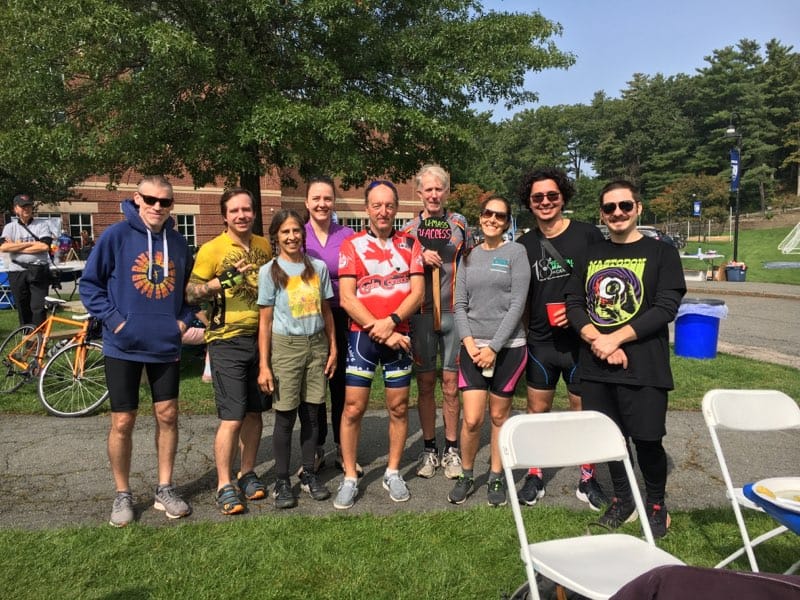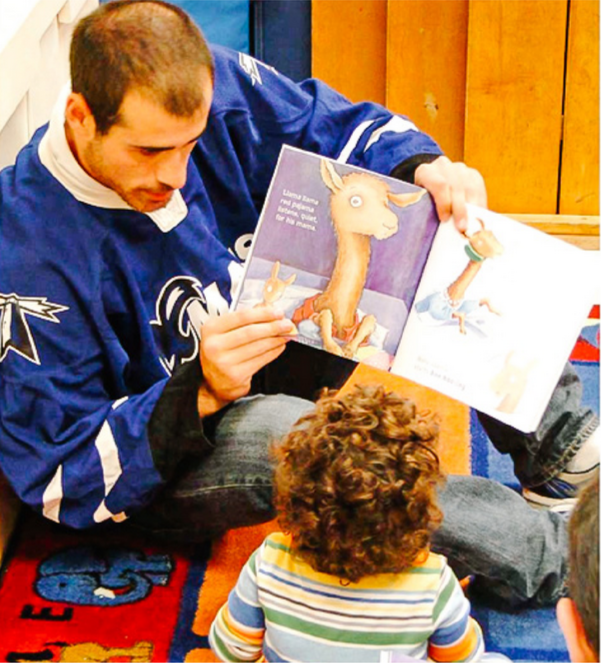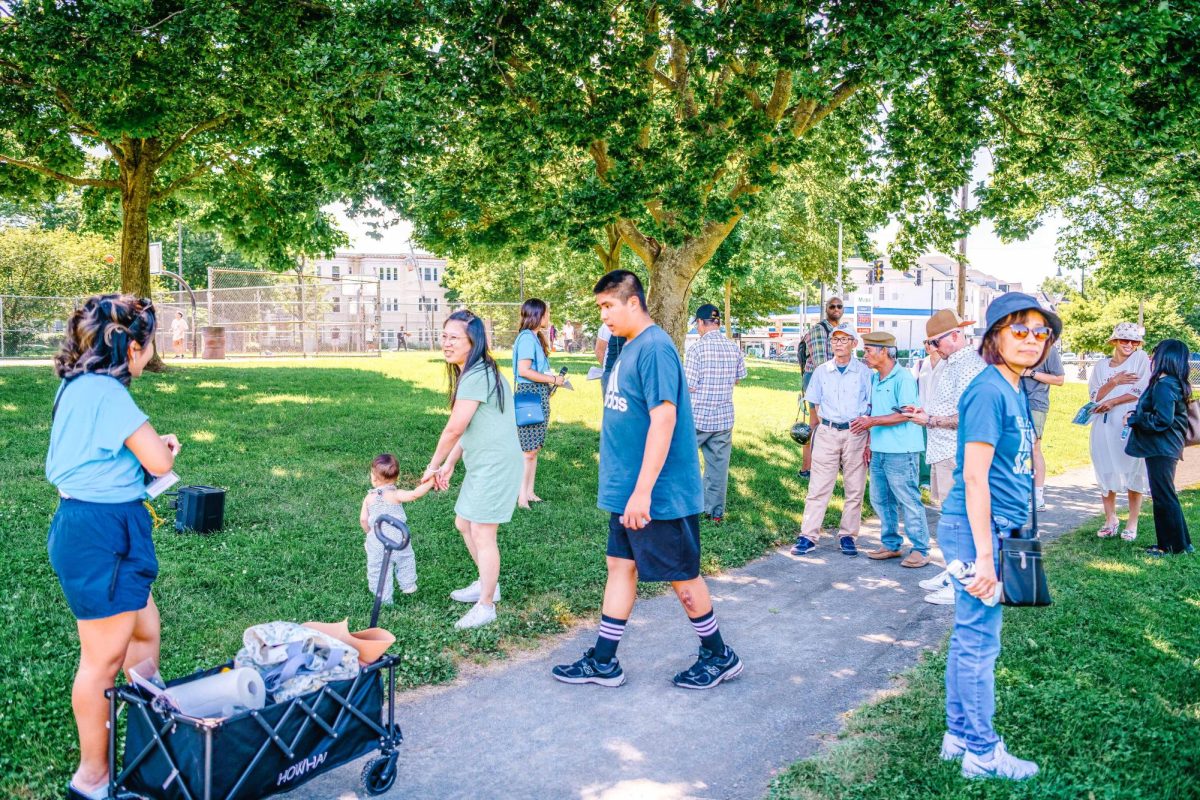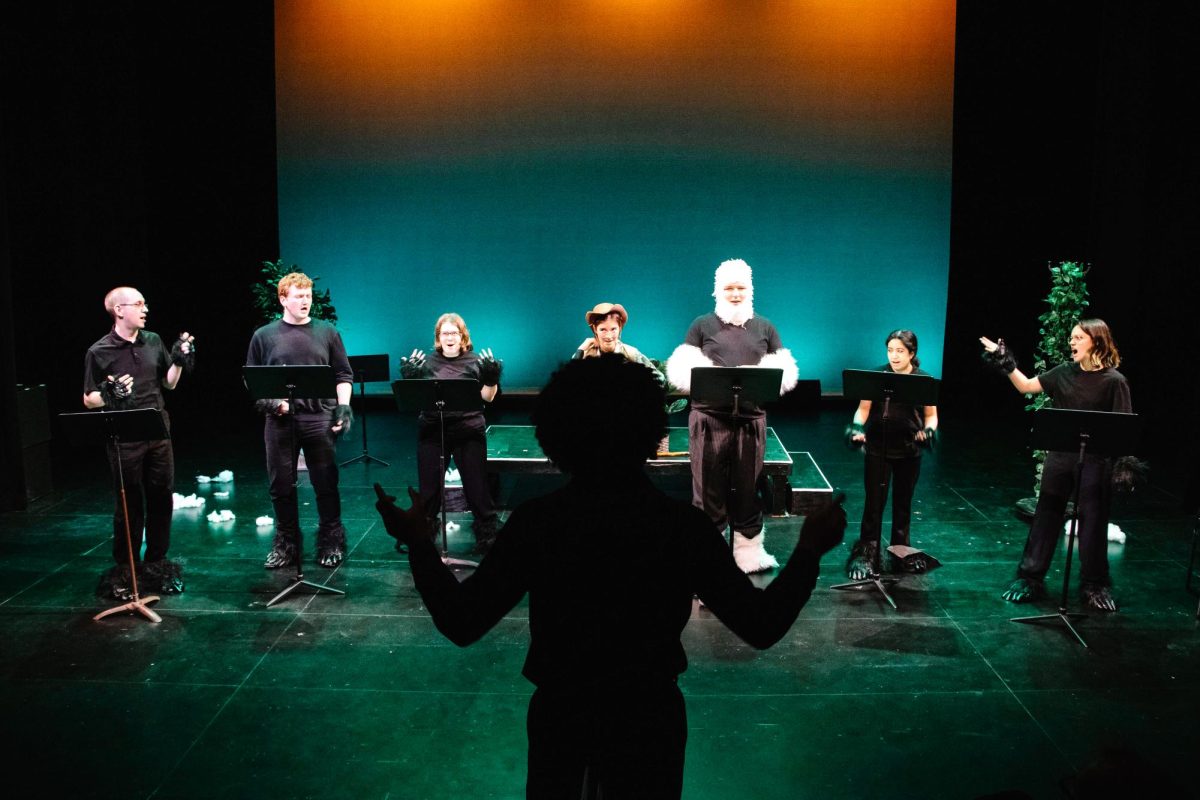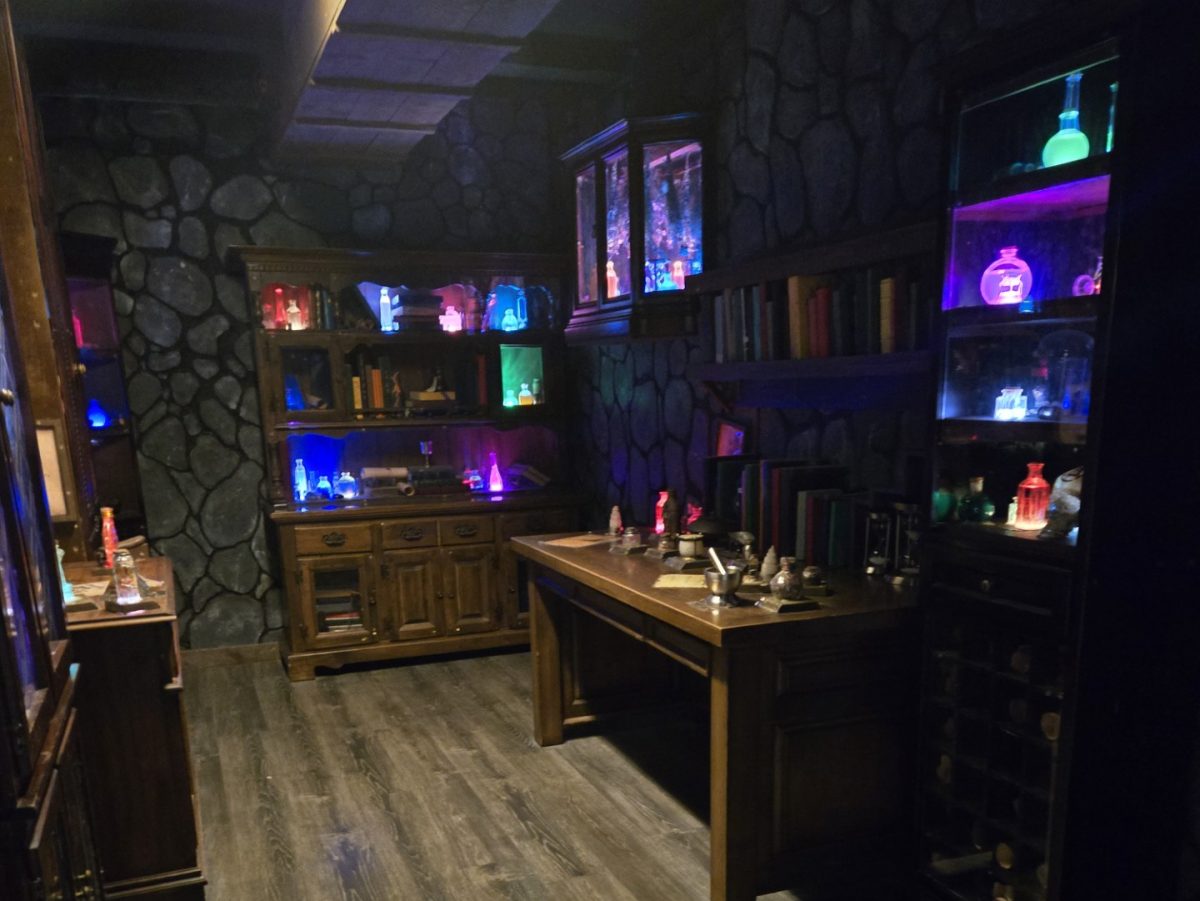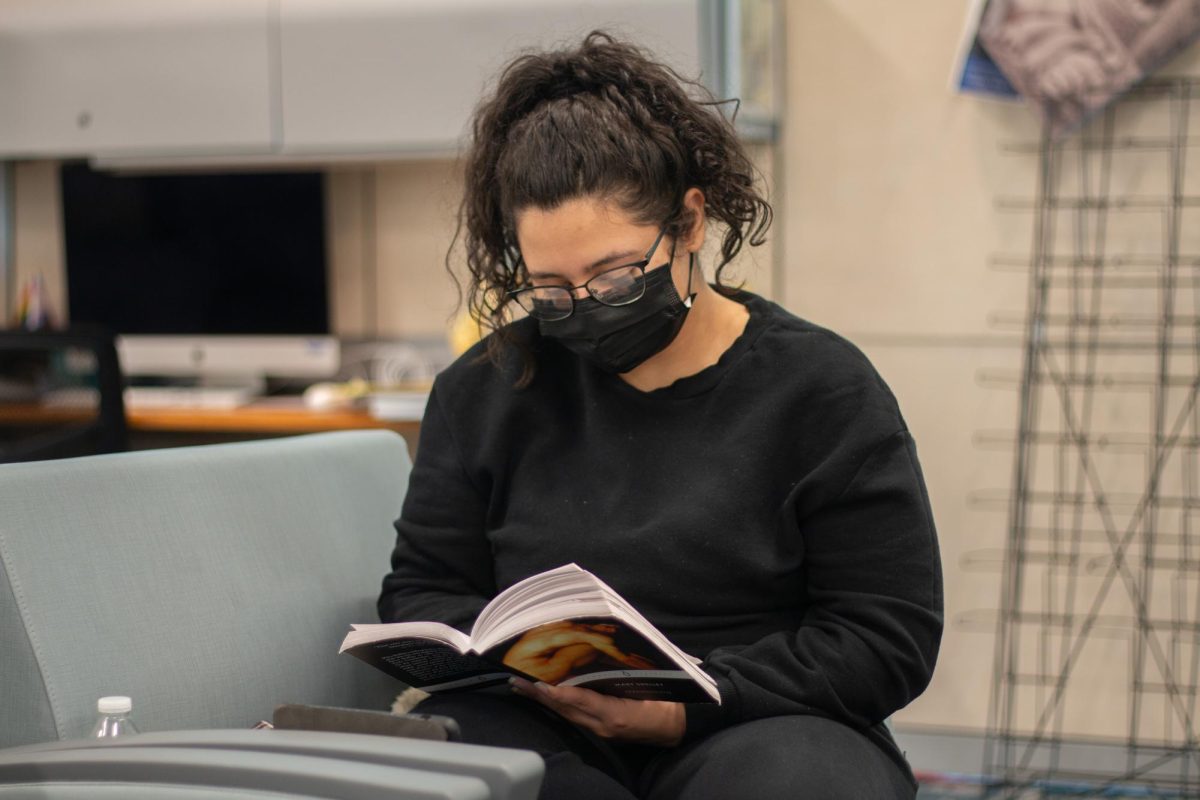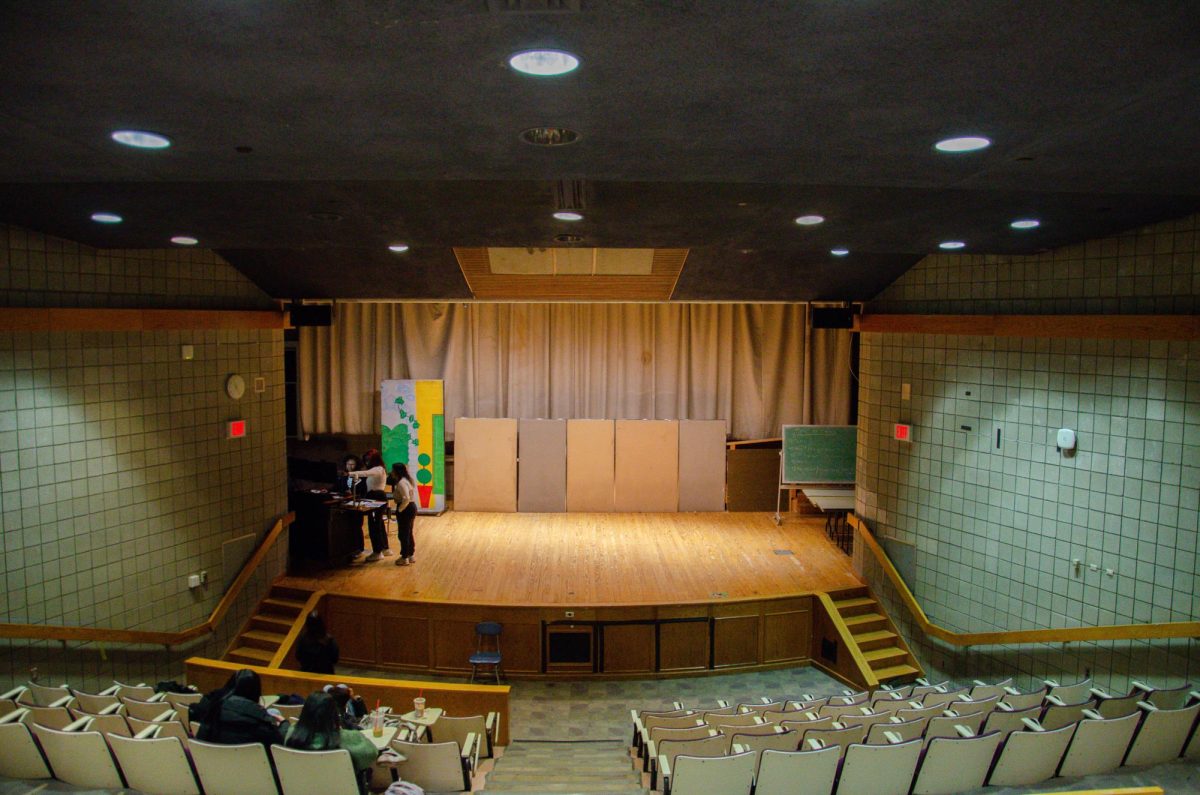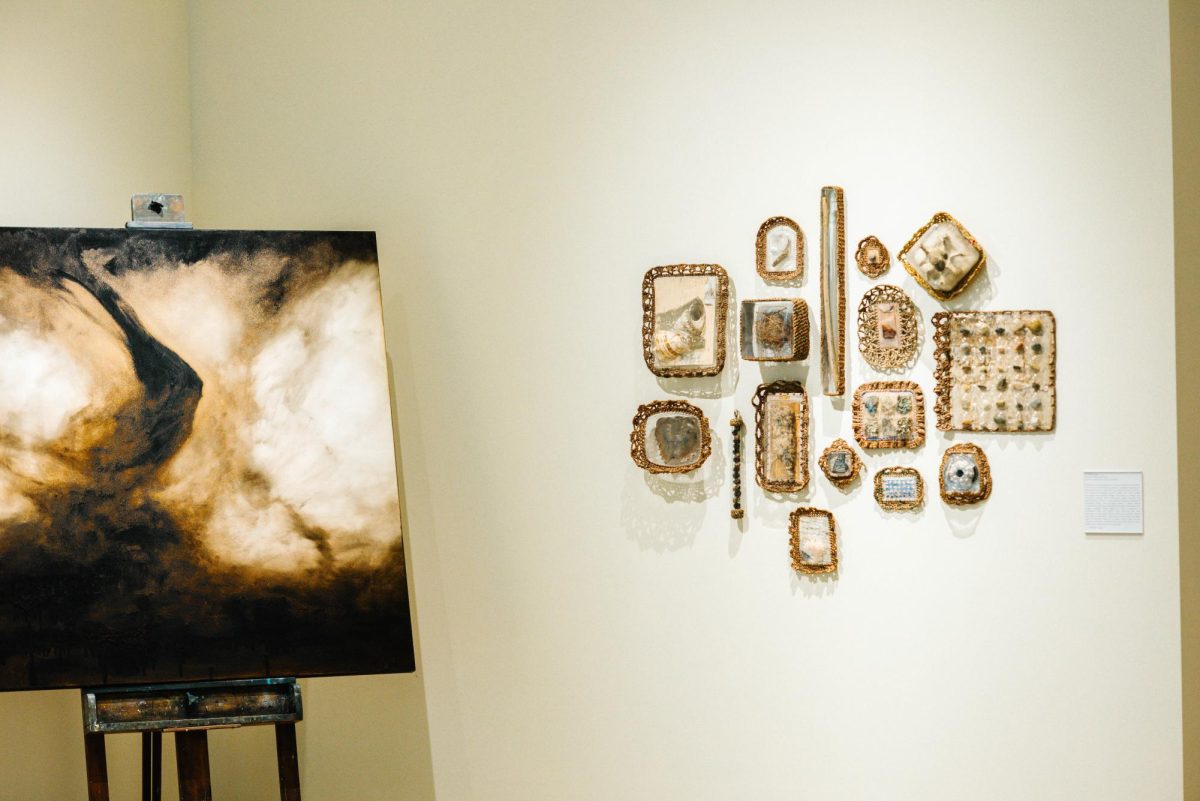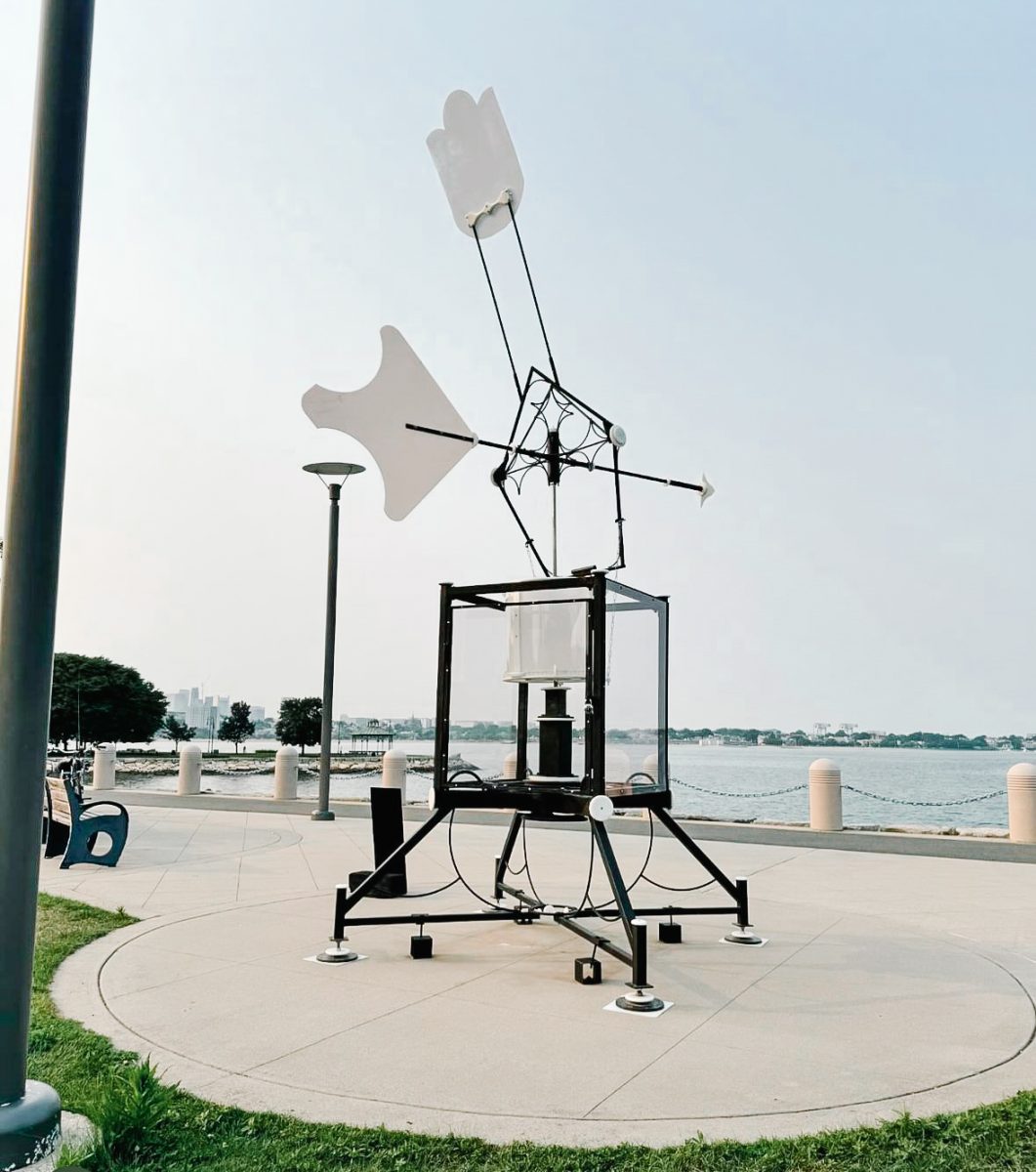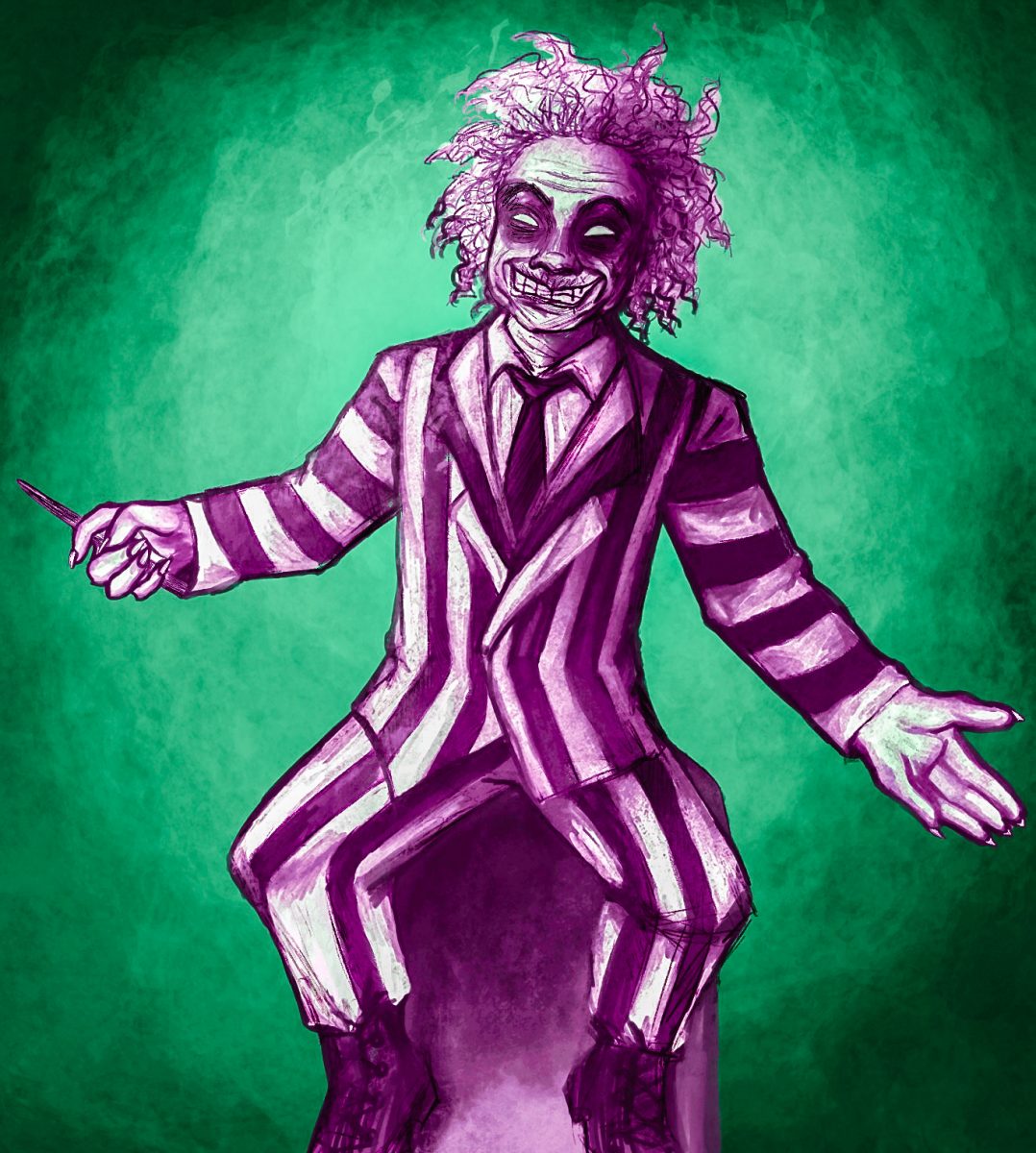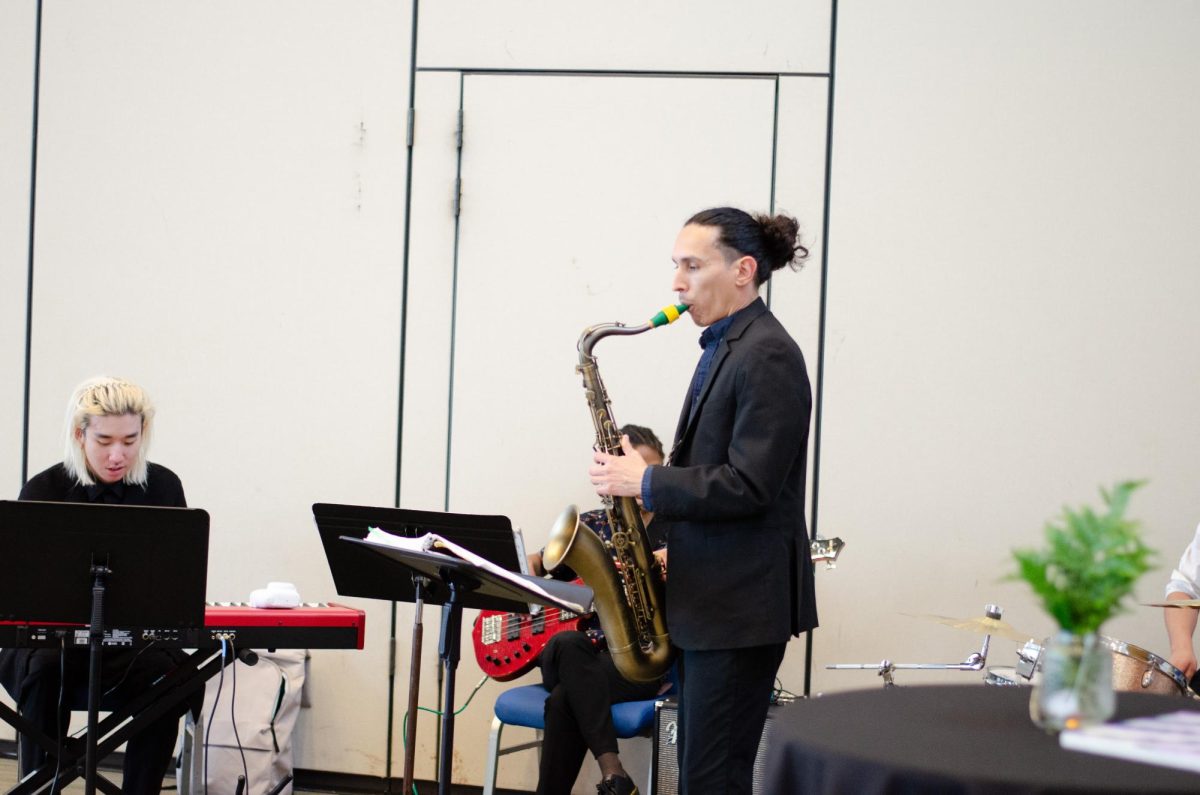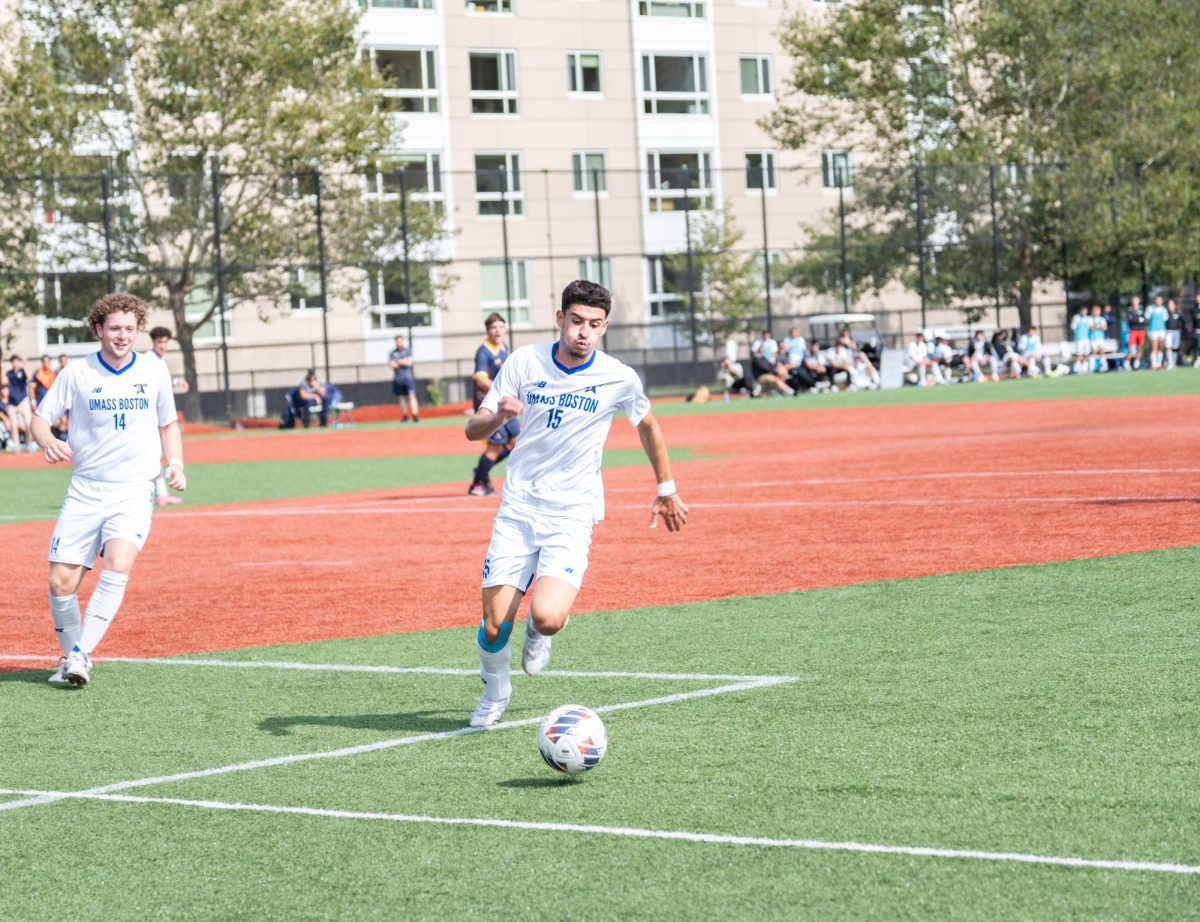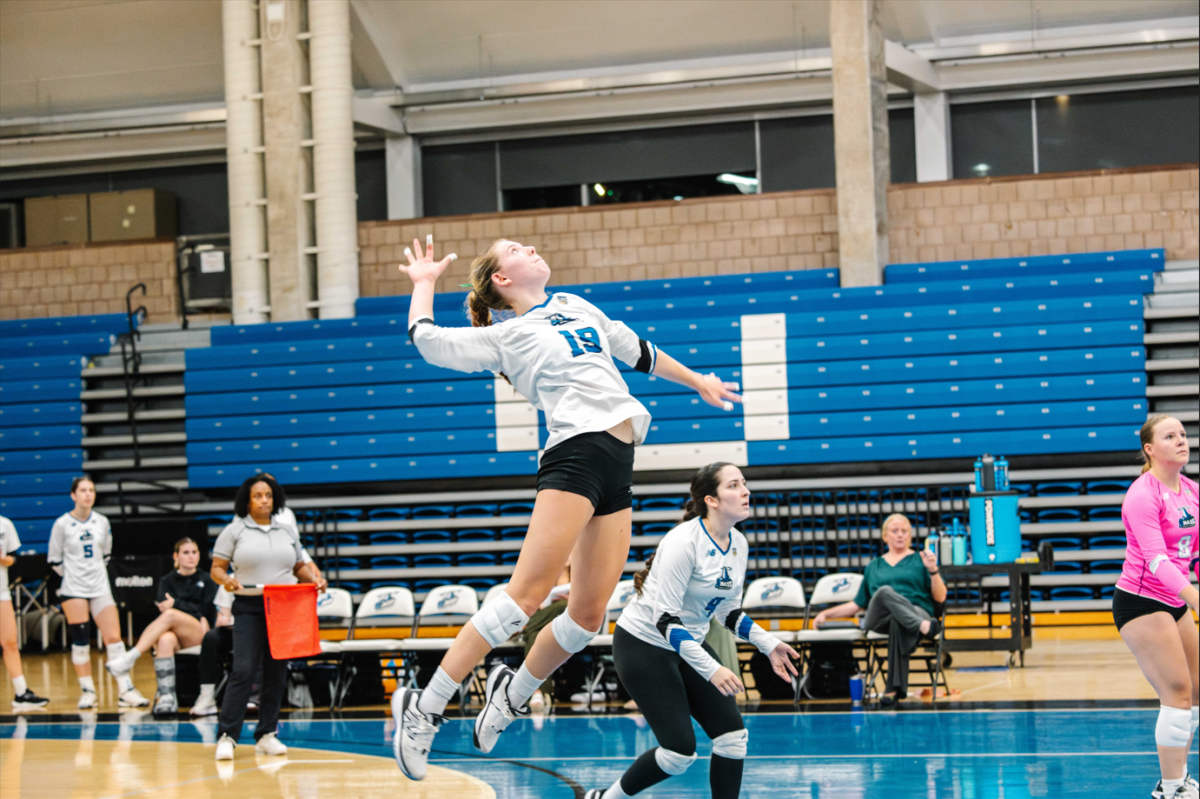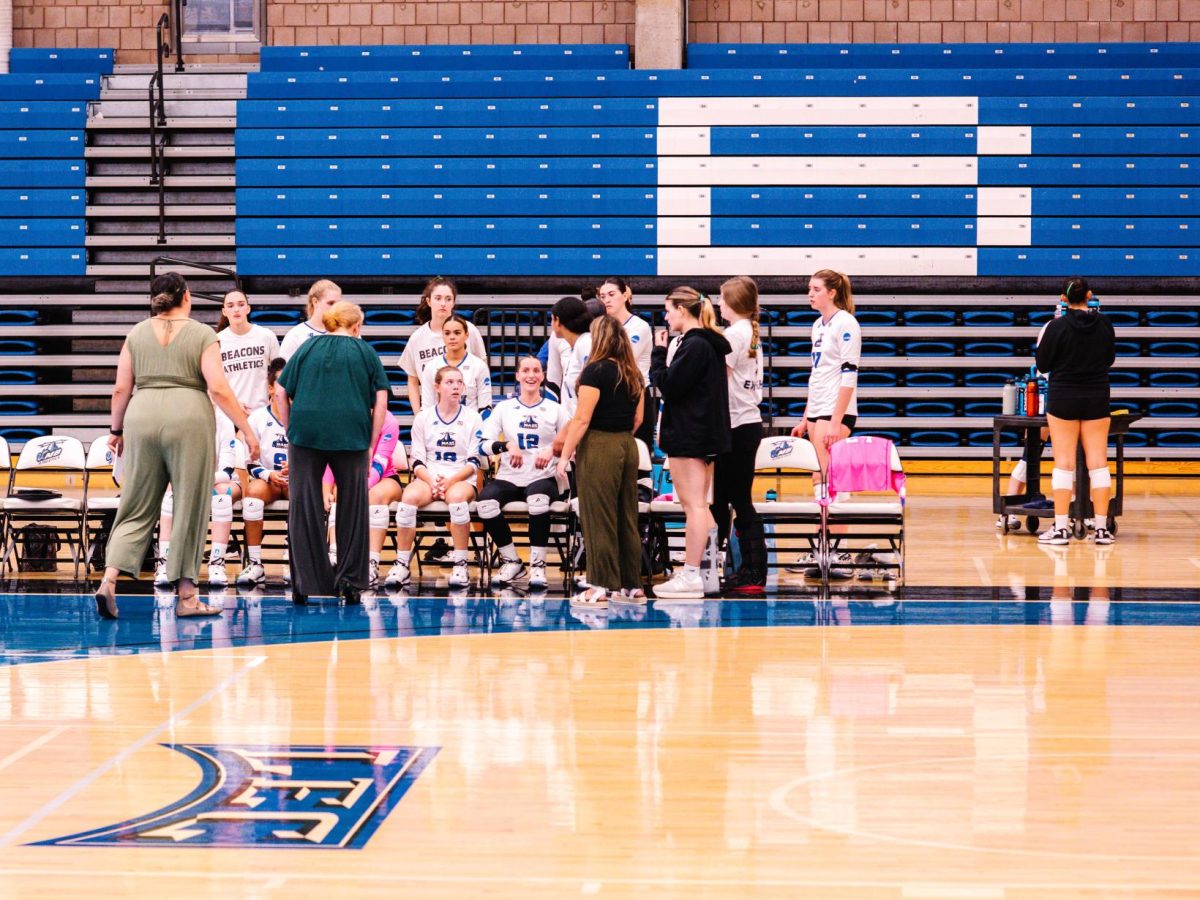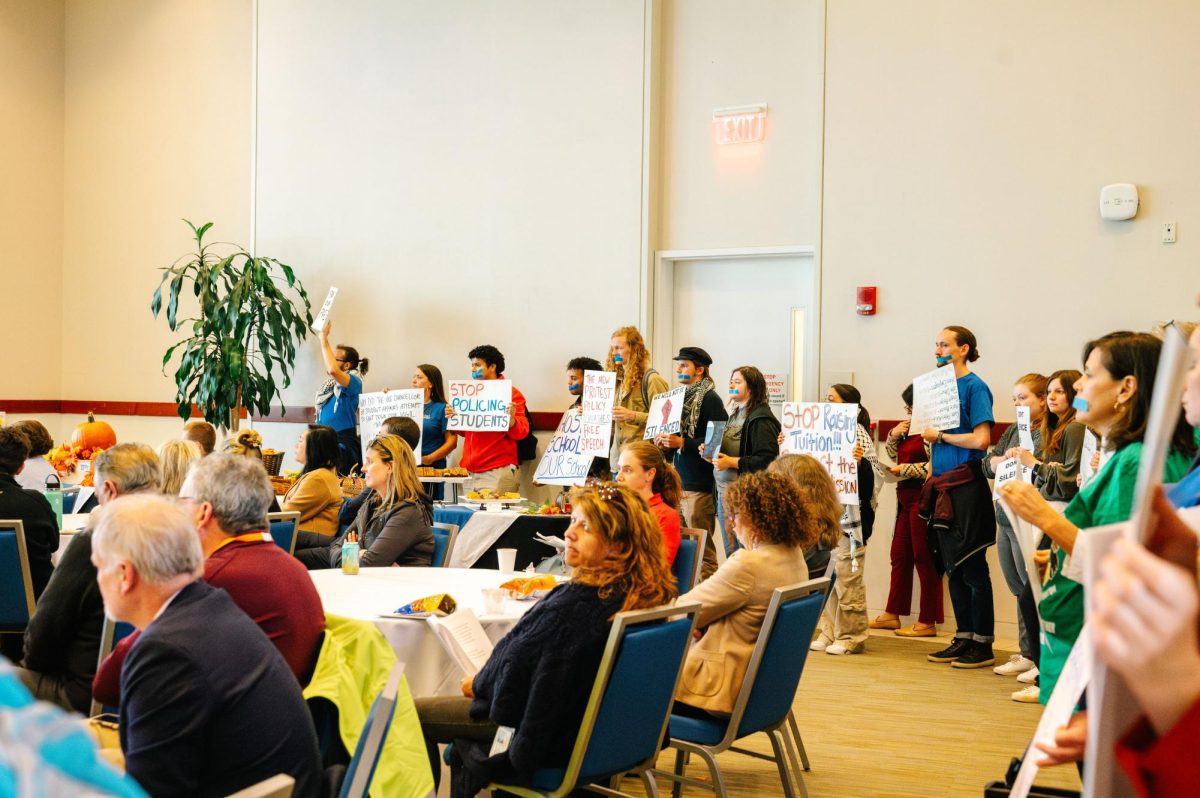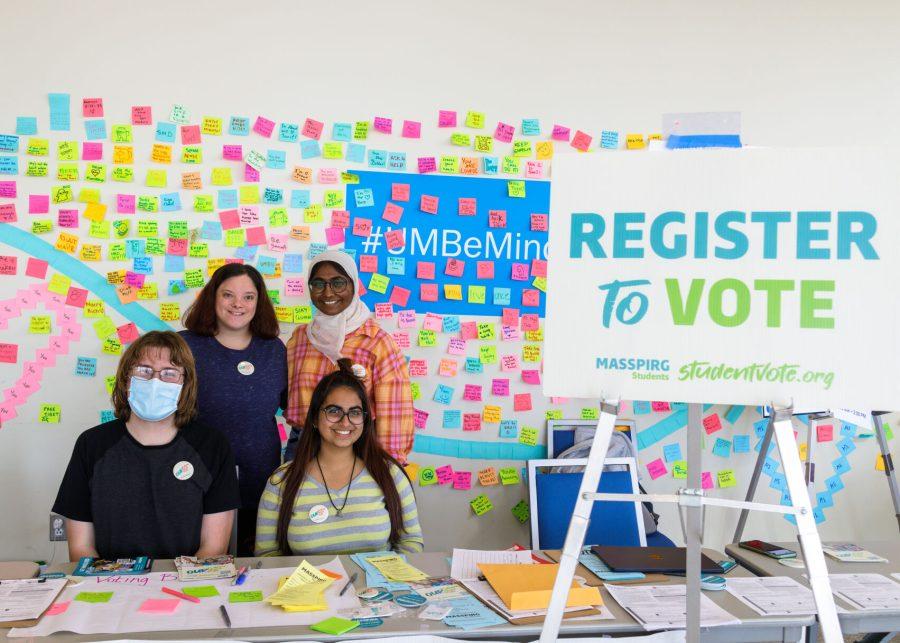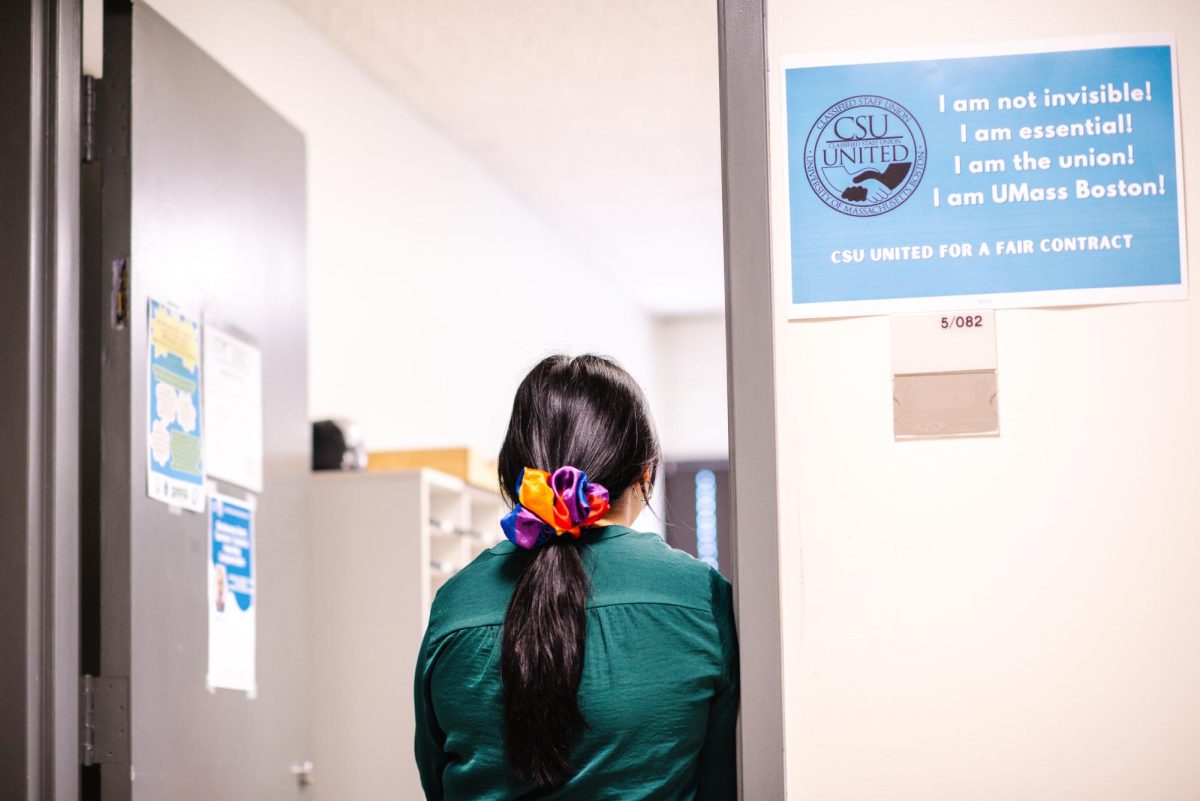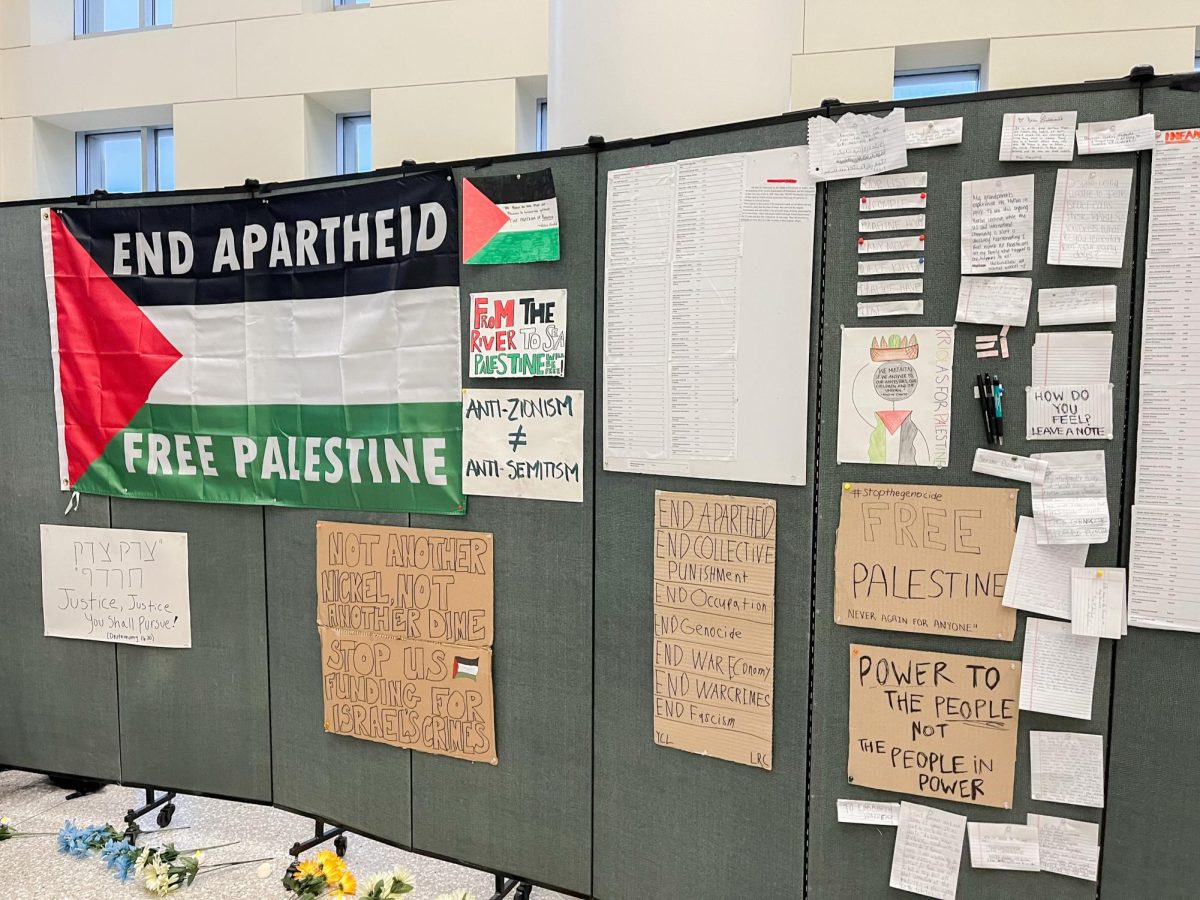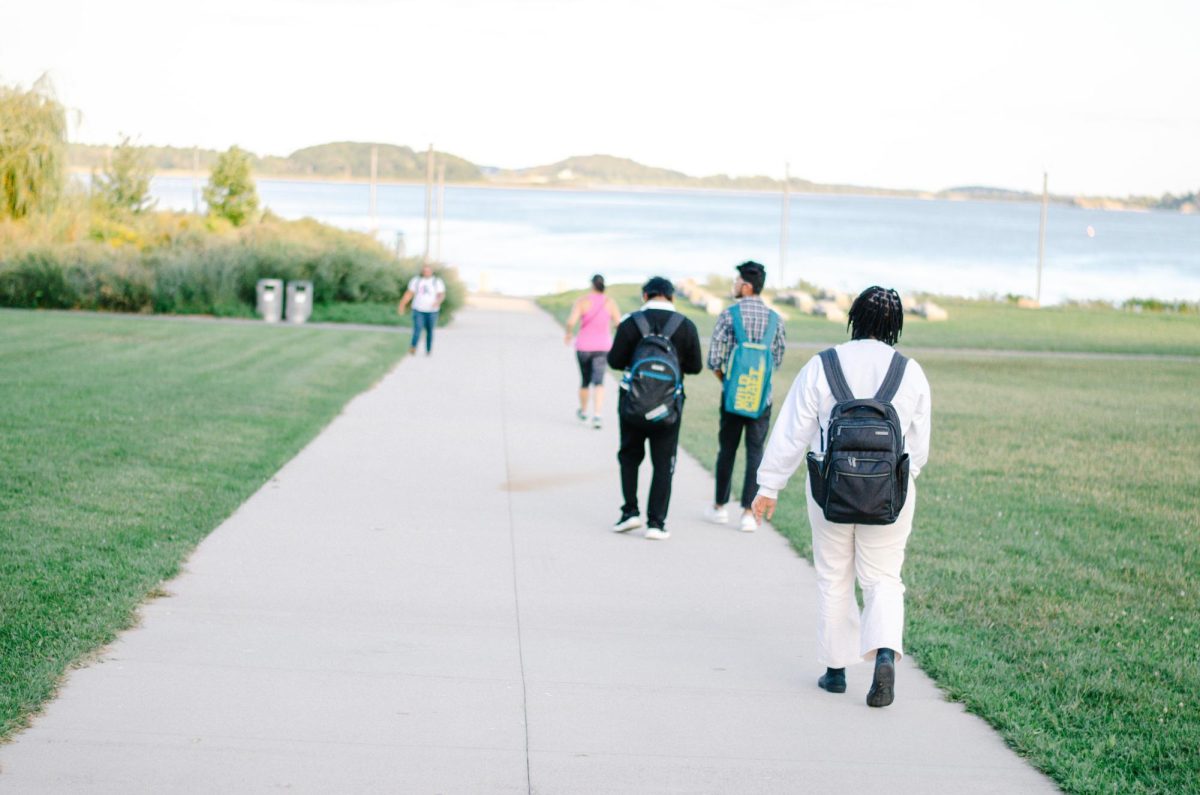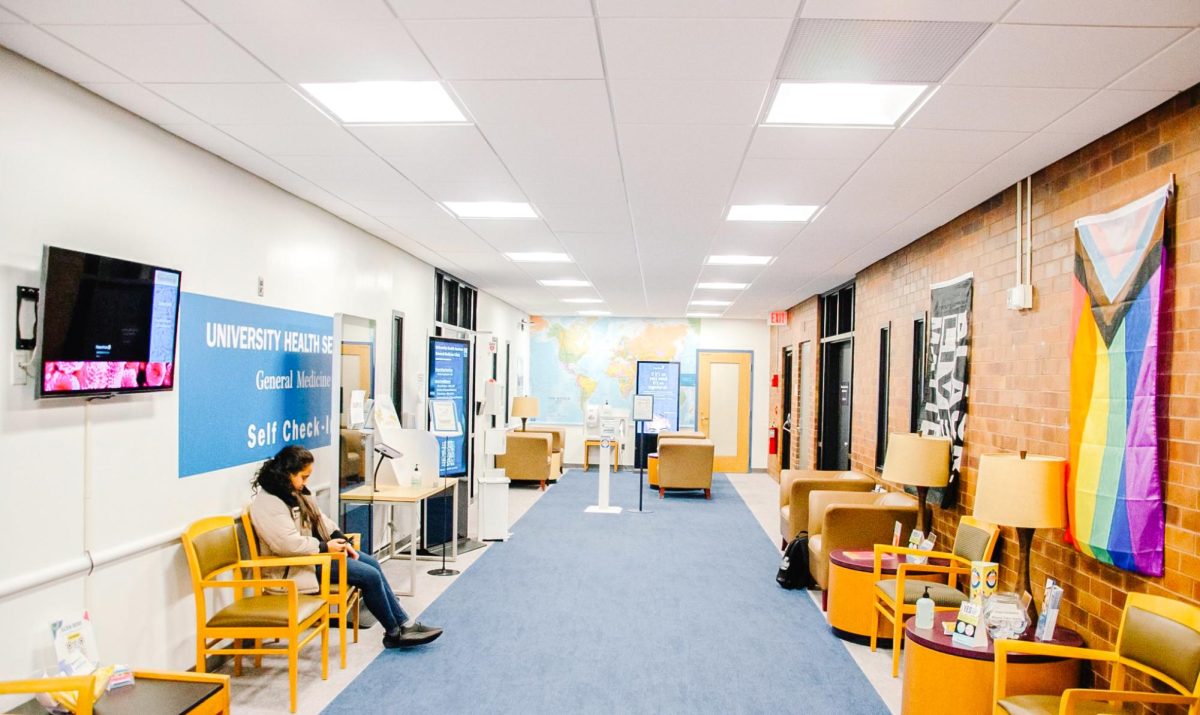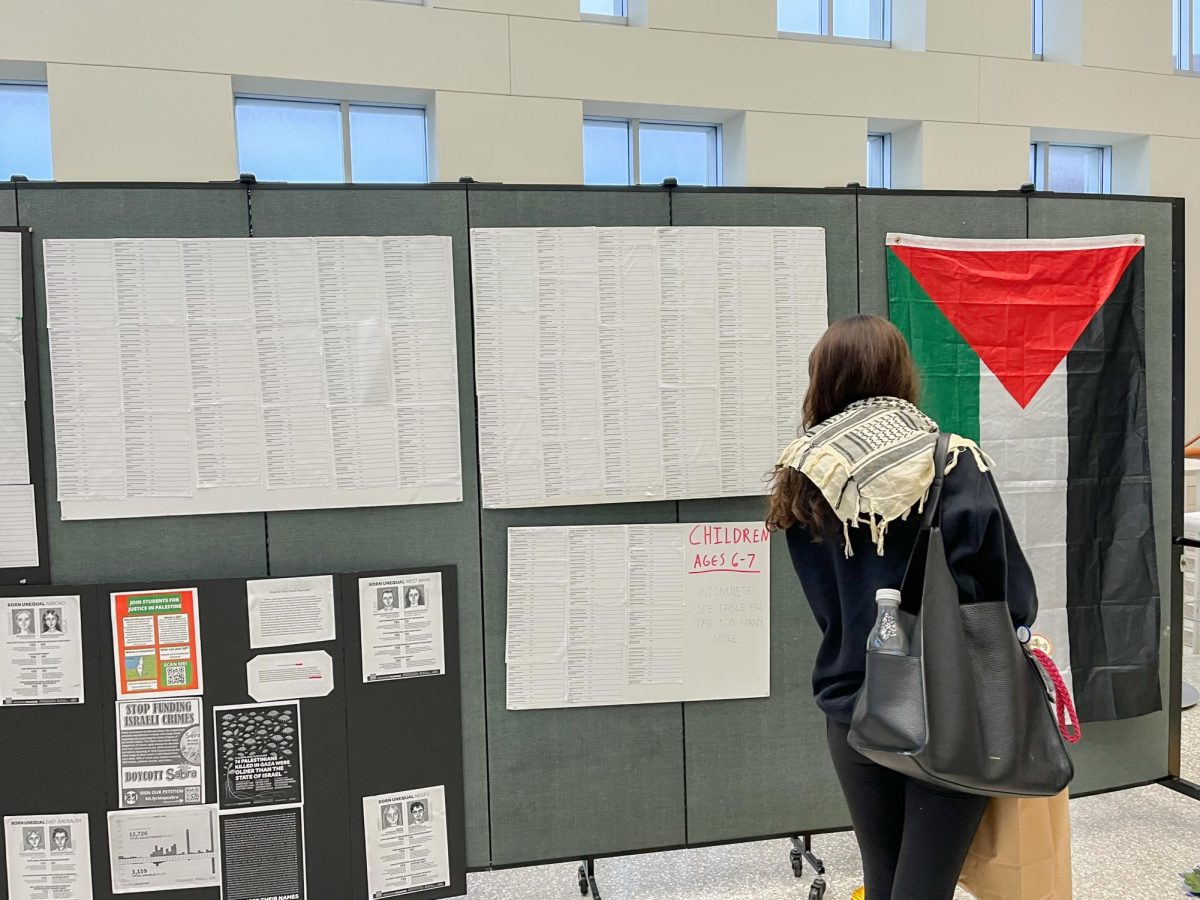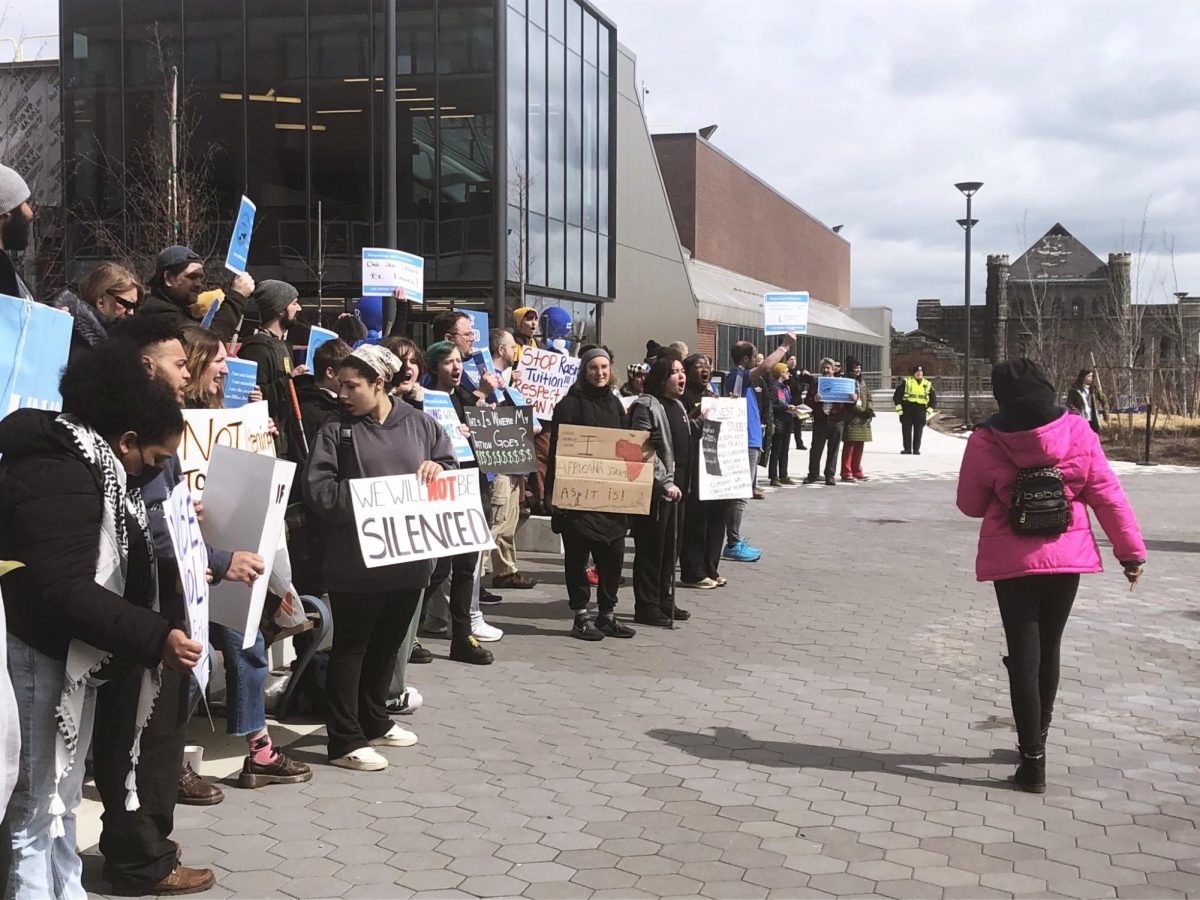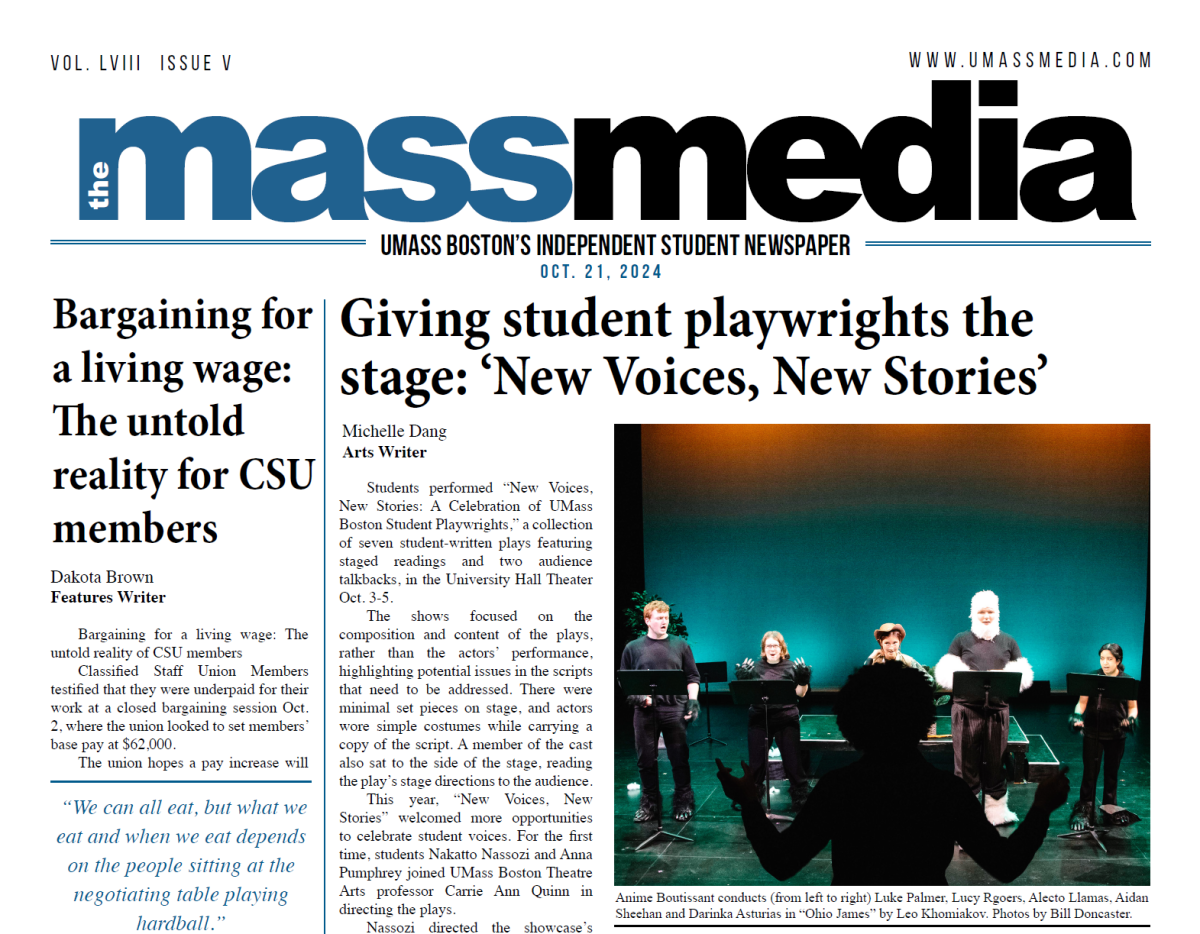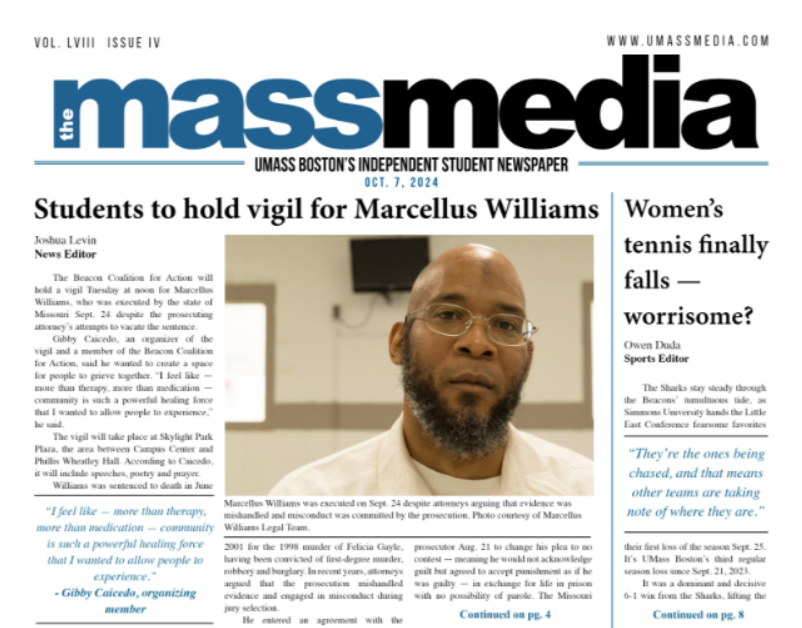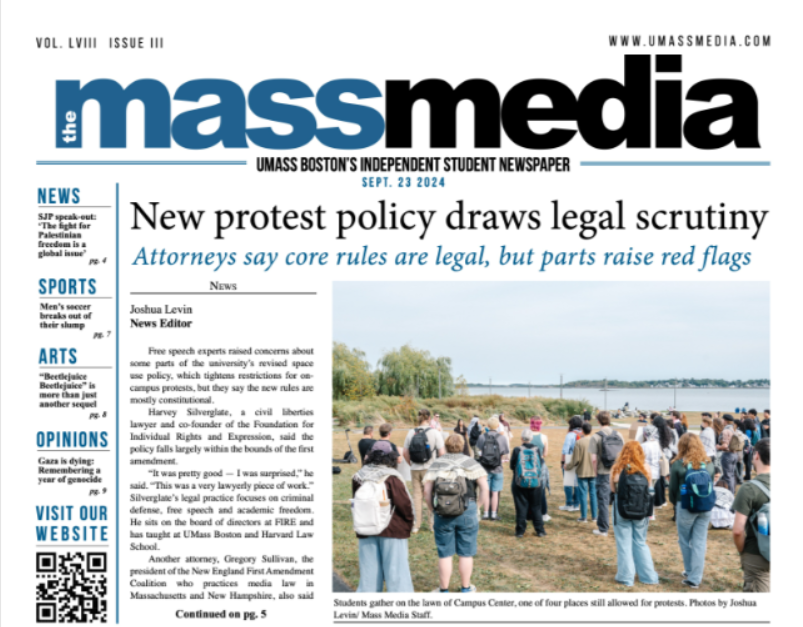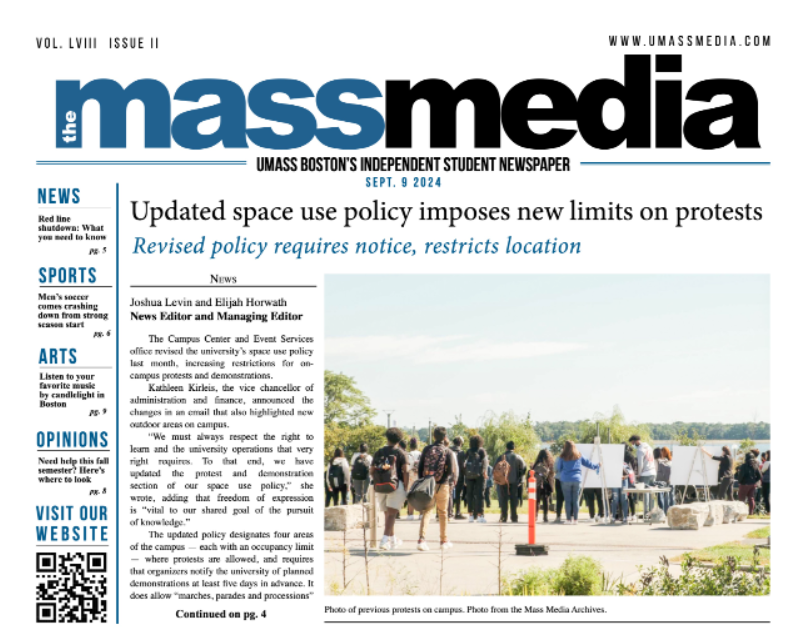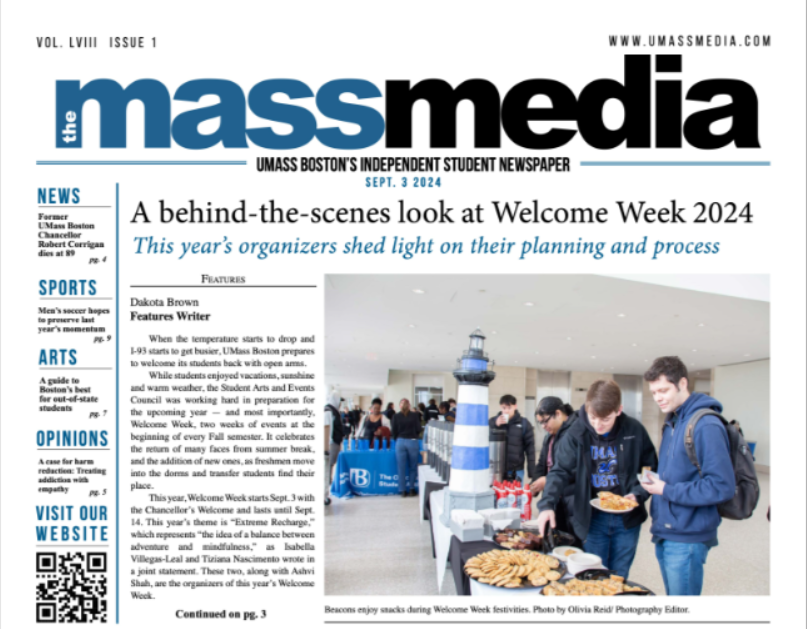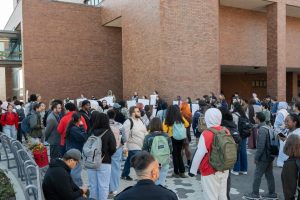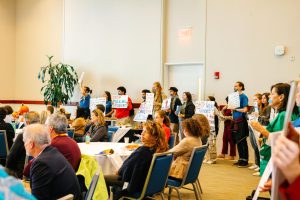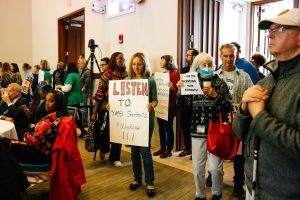AIDS: 25 years of Survival
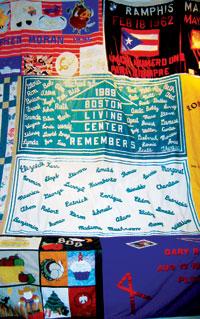
December 12, 2006
Brendon Gorham wasn’t looking for volunteers when Mary Ellen Madden approached him with her story. While working at the Queer Student Center information both during the UMass Boston Open House back in October, Gorham happened strike up a conversation with Madden walked by.
Gorham mentioned that he was helping to organize pieces to display in the Harbor Art Gallery as part of UMass Boston’s recognition of World AIDS Day on December 1. The University’s Office of Communication and Community Relations department had already commissioned the nationally renown AIDS quilt be displayed in the Campus Center. Gorham was working to have a section of the quilt displayed as part of the gallery’s exhibit, “Above & Beyond: Our Community Responds to HIV/AIDS.”
Hearing this, Mary Ellen happened to mention that she, too, had a small square section of the AIDS quilt-one that she had made herself over ten years ago when her son, James, died from the disease.
James had been HIV positive since the mid-80s. For the last year of his life he stayed at home while Mary Ellen served as his primary care giver, finally losing the battle against AIDS in May 1995. “I keep my son with me everyday,” Mary Ellen told Gorham. “He is always near me and I miss him every minute of every day.”
Mary Ellen now works in UMass Boston’s Early Learning Center after graduating from the University in 2004. Sadly, the chances of Brendon running into someone with the same story as Mary Ellen-someone who’s personally dealt with the effects of this devastating epidemic-is not as unlikely as you might like to think.
James was just one individual who struggled with the incurable illness; thousands more like him current live in Boston. HIV/AIDS continues to affect the lives of over 1 million individuals living in the US. Approximately 40,000 new HIV cases develop each year. In recognition of this ongoing global tragedy, several UMass Boston groups came together to make “Above & Beyond” possible. Artwork, education, history, and memory are on display until the end of the semester in an effort to bring much-needed awareness of the ongoing AIDS crisis to the UMass community.
The community here in Boston has for many years been instrumental in AIDS activism. College of Public and Community Service professor, Luis Aponte-Pares, has worked for the past six years with a local group, The History Project, to document the last two decades of AIDS activism efforts of the GLBT community here in Boston.
In June 2006, The History Project and Aponte-Pares premiered “Above & Beyond” to commemorate the 25th anniversary of the World Health Organization’s recognition of the AIDS epidemic in 1981 and to serve as a testimony of the need continued for activism in both Boston and the rest of the country. Their exhibit is part of the Harbor Art Gallery’s show and features over a dozen panels of in-depth information detailing a timeline of GLBT activism in the state. “At the national level, Boston was one of the leaders of this movement,” says Aponte-Pares. “Somebody has to preserve this history.”
The result of hundreds of hours of research into decades of articles and information, the time-line is an overwhelming compilation of stunning photography and text. “This is more the story of activism, because AIDS is just so big,” notes Aponte-Pares.
Some highlights of the timeline include the following:
? Not until 1986 did President Ronald Reagan use the words “Acquired Immune Deficiency Syndrome” and AIDS in a public speech, finally raising in the issue as a national concern.
? In 1988, ACT UP, a high-profile activist group infamous for their attention-getting direct-action efforts, famously protested MGH’s lack of available drug treatment by staging “die-ins.” Participants brought attention to the severity of their cause by lying down in the walkways outside the hospital.
While The History Project’s exhibit focuses on preserving the history of AIDS activism, the AIDS Memorial Quilt centers around preserving the memory of AIDS victims. Decorated by friends and family members, the quilt’s panels often incorporate personal items of deceased loved ones. Each 3’x6′ panel measures the size of a human grave as a way to honor victims refused proper grave sites or funeral ceremonies because of negative social assumptions or stigmas, some of which still accompany the disease. Mary Ellen Madden experienced this difficulty herself in finding a funeral home that would accept her son’s body, worsening her tragedy. Fortunately getting involved in the AIDS Quilt project and AIDS Action, a group dedicated to HIV/AIDS education, has allowed Mary to honor James’ memory through community and education.
Dealing with tragedy sometimes creates a sense of solitary suffering, a sense that no one else can quite know how you feel, especially in the case of HIV/AIDS. Getting involved in educational projects and activism is on way for people like Mary Ellen to cope with the intense emotions. “It’s a concrete way to work out your feelings. Just being with other people who are dealing with this,” says Mary of her involvement. “You have people who can identify with what you’re feeling.”
AIDS remains a critical issue, even in light of the community-based support that has developed for AIDS awareness and education. The U.S. Senate passed a federal HIV/AIDS funding bill that would provide $2.1 billion on Wednesday, December 6 nationwide for medical care, counseling and testing of patients who cannot afford treatment or have no health insurance. The Ryan White CARE Act made it through the Senate on what would have been White’s 35th birthday. White, a hemophiliac who was diagnosed with AIDS at age 13 in 1984, died of the disease six years later. But the House of Representatives has yet to take a stand on the legislation.
Many may feel this issue is less pressing today than 20 years ago; the very sense of the accomplishments of activists mixed with natural human complacency now works against the efforts of many activists struggling to that keep AIDS issues from sliding into the background.
“Your generation has no memory of this,” explains Aponte-Pares, and so the number of AIDS infections “is going back up.”
Many of the groups that traditionally see themselves as being not at-risk actually have the greatest potential for dramatic AIDS rate increase. For Black and Latino communities, this is absolutely the case. Blacks and Latinos make up 13% and 14% of the U.S. population, but when it comes to AIDS diagnoses they make up 49% and 20%, respectively.
“What we have is not enough,” says Brendon Gorham. “There is a difference between knowing it exists and knowing how the issues can affect you.”
What are ways to reduce the risk of getting HIV? Make an agreement with a partner who is HIV-negative to be sexually faithful to each other, and stick to it. If you or you partner is HIV-positive, talk with your health car provider about how to reduce your risk, include using latex condoms or dental dams. Always use a condom for vaginal or anal sex, and barrier methods, such as a condom or dental dams. If you are HIV-positive and are pregnant, see your health care provider to get appropriate treatment. Do not share needles or syringes for any kind of injection drug use. Get Tested! Ask partners to do the same. HIV/AIDS in the U.S. – Key Trends and Current Cases AIDS cases have been reported in all 50 states, the District of Columbia and all U.S. Territories. As many as one-quarter of those infected with HIV do not know they are HIV-positive The US Center for Disease Control and Prevention (CDC) estimates that more than 500,000 Americans with AIDS have already died and that 1 million more are currently living with HIV/AIDS. There is no cure for HIV/AIDS. The number of new infections occurring annually in the U.S. Has not decreased in the last decade, remaining constant at approximately 40,000 new HIV cases each year. However recent analyses suggest a potential rise in occurrence among some populations. Advances in treatment have dramatically decreased the number of people who have died of AIDS since the peak in the mid-1990’s. However, the number of deaths among people with AIDS has remained relatively steady in recent years. Young people, especially young women and people of color, have been particualy affected by the epidemic. Young African Americans represented 66% of AIDS cases reported among 13-19 year olds in 2003; Latino teens represented 21%. Although African-American and Latinos represented 13% and 14% of the U.S. Population, respectively, in 2004, they accounted for 49% and 20% of new AIDS diagnoses. Women account for a growing share of new AIDS diagnoses, rising from 8 percent in 1985 to 27% of new AIDS diagnoses in 2004. Men who have sex with men account for approximately 42% of all new AIDS diagnoses in 2004 in the U.S. And 57% of new AIDS diagnoses among men that same year.

